When to travel
The tables below list average daytime high and nighttime low temperatures and average percentages of sunny and rainy days for selected cities. A rainy day is defined as a day on which at least 1 mm of rain falls, while a sunny day is a day on which the sun shines at least 40% of the daytime.
(Source: Japan Meteorological Agency )
New Year is one of Japan's three major travel seasons with intensive domestic and international travel activity. Many shops, restaurants and attractions are closed for at least one day between December 29 and January 4. Read more about visiting Japan during New Year .
The remainder of January is a good time for visiting Japan, as the weather is usually sunny and dry and sightseeing spots are not very crowded (except possibly around Chinese New Year). Only in northern Japan and along the Sea of Japan coast, there is lots of snowfall , and conditions are good for winter sports . The downside of a visit in winter are the relatively short days (sunset is around 5pm in Tokyo) and the vegetation's barren state.
Like January, February is a good time for visiting Japan as the weather is usually sunny and dry and sightseeing spots are not very crowded (except possibly around Chinese New Year). The downside of a visit in winter are the relatively short days (sunset is around 5:30pm in Tokyo) and the vegetation's barren state.
Northern Japan and the Sea of Japan coast receive lots of snowfall . At the peak of winter, February tends to be the best time for winter sports and viewing winter sceneries, such as the drift ice off Hokkaido and the snow-covered farm houses of Shirakawago .
Early flowering plants and trees, such as plum trees , deliver the first signs of spring, while the weather is getting noticeably milder. Towards the end of March the cherry blossom season starts in certain regions, while in northern Japan conditions are still good for winter sports . Domestic travel activity increases in the second half of March due to spring school holidays.
Besides autumn, April is often considered the best time to visit Japan because the cherry blossom are in bloom and the weather is pleasantly mild. Domestic travel activity is increased in early April due to spring school holidays, in late April due to the start of the Golden Week and during most of the rest of the month due the cherry blossom season.
Golden Week , one of Japan's busiest travel seasons, takes place in the end of April and beginning of May and can be the cause of various travel-related concerns.
However, the remainder of May is one of the best times for visiting Japan, as the vegetation has become lush, the temperatures are still comfortable and tourists spots tend to be relatively uncrowded. In Hokkaido , the progress of spring is delayed by about one month compared to Tokyo . At the other end of the country, in Okinawa , the rainy season (tsuyu) typically lasts from early May to mid June.
From the beginning of June, the rainy season (tsuyu) visits most parts of Japan except Hokkaido . While it does not rain every day, the weather tends to be overcast and dreary. The duration and intensity of the rainy season can vary quite strongly from year to year.
Hot spring resorts like Hakone and the wooded temple mountain Koyasan are some places that can be quite attractive in rainy weather. Hokkaido is an attractive destination in June as it is least affected by the rainy season. Also, the weather in Okinawa takes a dramatic turn to the better after the end of the rainy season there in late June.
The rainy season (tsuyu) typically ends in the first half of July. It is hot and humid in most of Japan, and just standing outdoors can make you sweat. The conditions are more comfortable in higher elevations and in Hokkaido , a highly popular destination among outdoor lovers during the summer months.
Many local festivals and fireworks are held. Mount Fuji is opened for climbing . Cormorant fishing can be observed. It is also a very good time of the year for beach holidays in Okinawa . With the summer school holidays from late July through August, domestic travel activity increases considerably.
August is hot and humid in most of Japan. The conditions are more comfortable in higher elevations and in Hokkaido , a highly popular destination among outdoor lovers during the summer months. Many local festivals and fireworks are held in August. Travel activity is high during the entire month due to summer school holidays, but it is especially intensive during the Obon week in mid August.
The typhoon season reaches its peak in August and September. Typhoons usually hit the coasts of Okinawa , Kyushu and Shikoku and cause strong rain and wind in wide parts or all of Japan for about two days. Luckily, typhoons are often followed by very good weather. The weather in September can still be hot and humid, but tourist spots have become less crowded.
October is one of the most pleasant months for traveling in Japan as the weather remains warm, but is not hot and humid anymore. Trees begin turning colors in the northern regions and higher elevations.
November is one of the best times to visit Japan, as the weather is relatively dry and mild, and the autumn colors are spectacular in many parts of the country. Travel activity tends to be low except around popular autumn leaf spots .
December is a good month for traveling thanks to generally dry weather conditions. Domestic travel activity remains low during the first half of December until the beginning of winter school holidays towards the end of the month. The downsides of a visit in winter are the relatively short days (sunset is around 4:30pm in Tokyo) and the barren state of the vegetation. From around December 29 some tourist attractions close down for the New Year holidays . The ski season gets fully underway in December.
Questions? Ask in our forum .


When to go to Japan

When is the best time to visit Japan?
The best time to visit Japan is spring (March & April) or autumn (October & November), when days are sunny and dry. During the summer months (May to September), the cities are hot and humid, with heavy rainfall occurring across the country in June & July, except for Hokkaido. In winter, days are cool and crisp, with heavy snowfall in Hokkaido and the Japanese Alps.
Japan weather & when to go
Pick a month below.
Weather seasons are becoming less predictable but peak visitor months remain more certain.
Unfollow the herd - avoid the peak months to enjoy fewer crowds, better availability, often lusher countryside and help to spread the economic benefits of tourism.
Weather overview
Japan is a year round destination , with four distinct seasons that offer something for everyone.
Skiers and snowboarders in search of the perfect powder stash are drawn to Japan’s mountain regions during winter, which also attract hikers during the summer months.
Further south, the beaches of the southern islands are also busy during summer thanks to high sea and air temperatures.
In spring and autumn, pleasant temperatures combine with the natural beauty of ‘sakura’ (cherry blossom season) and ‘koyo’ (autumn leaf viewing) to make these seasons an especially popular time to visit Japan.
Tokyo, Kyoto, Osaka, Takayama
Weather conditions and temperatures vary across Japan's main island of Honshu.
Northern Honshu and the Japanese Alps experience cooler temperatures (avg temp: 0°C) and heavy snowfall during the winter months, whilst the southern and western regions have milder winters (avg temp: 4 - 5°C) but are prone to hot and humid summers, especially in the main cities of Tokyo , Kyoto and Osaka with temperatures pushing the mercury up to 35°C on some days.
June is the wettest month of the year across Honshu, with tropical showers occurring until early July.
In terms of temperature and weather conditions, spring and autumn are typically the most pleasant times of the year to visit Honshu. During April, the cherry blossom advances from Hiroshima, in the south, to the higher altitudes of Takayama and the Japan Alps by the end of the month; and conversely, the autumn colours work their way down from the mountains in early October to Kyoto and southern regions by late November.
Okinawa Islands
Okinawa and Japan's southernmost islands enjoy a subtropical climate throughout the year, with temperatures that never dip below double figures, in fact rarely dropping under 20°C.
During the winter months Okinawa experiences the country’s mildest temperatures, although sea temperatures are chilly and only the hardy venture into the water.
Come March, spring is definitely in the air, heralding the arrival of the famous cherry blossom, with Okinawa and the southern islands the first place to catch this much anticipated season. Although the months of May & June see tropical rain, it comes in the form of short, sharp bursts and conditions are good for diving.
Summer days are typified by high temperatures and maximum sunshine, making it a popular time to visit the region's beaches, although as summer progresses there's more chance of typhoon, with August and September being peak typhoon season.
Typhoon season passes as autumn progresses and autumn days are warm and dry.
Japan's northernmost island, Hokkaido is cooler than the rest of the country with temperatures reaching as low as -8° during the winter months and peaking at 25°C during summer.
Weather conditions in the winter are affected by the island's proximity to Siberia, with cold winds that bring significant snowfall - essentially perfect conditions for winter sports.
The snow begins to melt as spring arrives in the north and bright sunny days make spring an ideal time for hiking and exploring the island's National Parks. The famous cherry blossom finally makes an appearance in May.
As the rest of Japan experiences humidity and rain during the summer months, Hokkaido enjoys pleasantly warm and sunny days, and so the hiking season continues.
The island also avoids the typhoons that pound the southern islands during Autumn months when days are typically crisp and dry, and by mid-September Hokkaido is the first place in the country to experience the famous autumn colours.
Shikoku & Kyushu
Located just off the southern tip of Honshu, the islands of Shikoku and Kyushu enjoy similar temperatures to the southern Honshu regions of Kyoto and Hiroshima , ranging from 5°C during winter to just over 30°C in the summer months.
Winters tend to be fairly mild and by the beginning of April the cherry blossom advances through the islands, making its way northwards.
Spring and summer are an enjoyable time to visit Shikoku and Kyushu when temperatures are pleasant and days are generally sunny, although tropical rainfall can be experienced in June and there is a chance of typhoons as the summer turns into autumn (August – September).
Once the typhoon season has passed, autumnal days return to dry skies and comfortable temperatures.
We think you may like this journey…

Following Ancient Trails
Wander along the ancient trails of Kumano Kodo and its spiritual shrines, enjoying the peaceful, and enchanting surroundings as well as taking in the hospitality of local families along the way.
Looking for inspiration?
When is the best time to visit Japan?

Mar 26, 2024 • 8 min read

Find out more about Japan's distinct seasons and when is the best time for you to visit © anek.soowannaphoom / Shutterstock
Japan may be small, but with its captivating blend of tradition and modernity – and bustling cities and stunning countryside – it offers a mighty experience to visitors. No matter when you choose to visit, you'll be on a trip of a lifetime in Japan .
In spring, the blossoming of the sakura (cherry blossom trees) creates a beautiful natural display that transforms the country into a vision in pink, luring travelers from all over the globe. Fall ushers in the resplendent koyo (autumn foliage) season, while summer opens the two-month window for summiting Mt Fuji. Winter is a great time for skiers, as Japan’s slopes are dusted with some of the finest powder on the planet.
Whether you’re looking to dive into the crowded streets of downtown Tokyo or find zen-like peace amongst tree-cloaked mountains, there’s a season that’s right for you in Japan.
Here’s a guide to choosing the perfect time to visit Japan.

April and May is the time for cherry blossoms and art
The cherry blossom season from April to May is the peak travel period in Japan. Locals and tourists flock to parks, gardens, tree-lined brooks and castle moats to partake in hanami , the annual ritual of observing the spring blossom. Picnicking under a canopy of cherry blossoms is a top bucket-list experience, and popular seasonal foods range from cherry blossom-flavored desserts and pastries to burger buns and noodles infused with earthy cherry notes.
This is a popular time to visit Japan with good reason, but you should also weigh up the undeniable beauty with the drawback of the vast crowds and the increased prices.
The cherry blossoms arrive and depart over a two-week period, dictated by weather patterns and local geography, and the exact timing can be tricky to predict in advance . Along Japan's so-called “Golden Route” – a popular tourist trail running along the east coast in the center of the country – the flowers typically emerge between late March and early April, so April is a fairly reliable month to book a trip.
Save this guide to the best places for cherry blossom viewing in Japan.
As the last petals fall, there is little reprieve for crowd-weary travelers. Golden Week arrives in early May, with warm and sunny weather and a string of national holidays. Hotel and flight prices soar as the crowds surge into Japan's cities, and public transport, city streets, shrines, temples, museums and other tourist attractions are crammed with sightseers.
In mountainous areas, hiking, mountain biking, kayaking, rafting and camping are popular activities, though high-altitude trails may not open until July.
In the cities, it’s the season for exploring by bike, on parkland strolls or sitting out in rooftop beer gardens – the Omohara Forest on the 6th floor of Omotesando’s Tokyu Plaza mall is a recommended spot for a tipple.
Tokyo’s spring sumo tournament also takes place in May, as well as the explosion of culture that is the Roppongi Art Night.

June and July are great for alpine hikes and Tokyo fireworks
June and July are the best months for hiking in the Japanese Alps, and nature enthusiasts flock to the great outdoors. Mountain escapes are perfect for adventurous travelers looking to escape the cities as the summer heat brews.
Early June is lovely, but by the end of the month, tsuyu (the rainy season) sets in. Many Japanese hikers will call off a day in the mountains at the slightest threat of rain, meaning hiking trails usually escape the mid-summer crowds. For the same reason, June is a good time to take advantage of cheaper hotel and flight prices.
The rainy season passes in July, though the damp weather can linger for the first couple of weeks, bringing gray and gloomy skies. Firework festivals are big business in Japan in July, launching tens of thousands of rockets into the night skies over major cities, while Tanabata, the festival of star-crossed lovers, sees locals don traditional kimono and yukata robes and head out in search of romance.
Taking a yakatabune (riverboat) tour during the 300-year-old Sumidagawa Fireworks Festival in Tokyo is strongly recommended; it's well worth the high price tag to avoid the gargantuan crowds (which can reach up to one million people).
It gets very hot and humid as July draws to a close; savvy travelers head to cooler Hokkaidō or the Japanese Alps or hit the slopes of Mt Fuji, which opens to hikers in the middle of the month.
August can mean blistering temperatures in Japan
Mid-August is the start of the busy O-Bon (Festival of the Dead) season – the summer counterpart to Golden Week. National holidays, colorful festivals and blistering temperatures (over 38°C/100°F) keep sights crowded and accommodations expensive (and often fully booked).
Many Japanese return to their hometowns or go on domestic vacations, so transport is hectic, and hotel prices soar. For a slightly calmer experience, head to the Okinawa Islands in the far southwest, where it's peak scuba diving season. The world's largest cosplay festival draws huge crowds to Nagoya City – book well in advance to secure accommodations.
Cooler mountain destinations are also popular in August, and Mt Fuji hosts hundreds of thousands of hikers during the mid-July to mid-September climbing season. Overnight summiteers should book mountain lodges well before starting the ascent. As August gives way to September, there's a brief lull before things pick up again during the fall foliage season.

September to November is best for hiking through fall foliage
In September, days are still warm – hot even – but less humid. Though the odd typhoon rolls through at this time of year, major cities are well-equipped to deal with bad weather, and this is generally a great time to travel in Japan.
Coastal towns such as Kamakura and Shimoda on the Izu Peninsula provide the perfect combo of sunny afternoons, beachfront Airbnbs and temperate waters, making this a great time to hit the beach .
In late September, autumn colors start to paint the mountains and the north in vivid tones, and the wave of color moves slowly south across the country. The radiant foliage of deciduous trees, from golden ginkgos to vermillion Momiji trees, lures crowds to ancient gardens and well-worn mountain trails. Jazz music fills the streets of Sendai City and lures devoted fans during the Jōzenji Street Jazz Festival .
Pleasantly warm days and cool evenings make October an excellent time to be in Japan. Fall foliage brings a blaze of color to the Japanese Alps, providing a stunning backdrop to its myriad mountain trails. Alternatively, stroll idly along Yokohama ’s fetching harbor before draining a few steins at the city’s annual Oktoberfest.
Late November is the most scenic time for hiking through the forests of Mt Takao and Mt Mitake on the outskirts of Tokyo, though early mornings and weekdays are recommended to avoid the weekend crush. The autumn leaves linger much longer than the cherry blossoms, so there’s less urgency among locals to charge up, and it's a quieter experience than the spring melee to view sakura .
In old daimyo (feudal lord) gardens, such as Rikugi-en in Tokyo and Kenroku-en in Kanazawa, the fiery leaves are illuminated after nightfall.

December to March is the best time for snow and winter festivities
In winter, most sights are uncrowded and accommodation is at its cheapest – except in Japan's ski resorts. Snow bunnies insist that Japan has some of the finest powder on the planet, particularly on the slopes of Hokkaidō in the far north.
December brings blue skies and cold temperatures across most of Japan. Bonenkai (year-end parties) fill city bars and restaurants, commercial strips are decorated with seasonal illuminations, and small Christmas markets sell mulled wine and festive trinkets.
Stick to the cities for New Year – many Japanese businesses shut down from December 29/30 to between January 3 and 6, but temples get busy. Local celebrations include Toshikoshi Soba, where locals eat soba noodles to usher in the New Year, and Joya-no-kane, the ringing of New Year bells.
Japan comes to life again in the second week of January, after the lull of the New Year holidays. Snow blankets the mountains of Hokkaidō and the country’s northern reaches. Major resorts such as Hokkaidō’s Niseko and Hakuba in Nagano host Olympic-quality slopes and are well set up for non-Japanese-speaking tourists. Be sure to finish off the day with a rejuvenating dip in one of Japan’s many onsens (hot spring bathhouses).
February is the coldest month of the year, and this is the time to warm your insides with hot sake and steaming bowls of ramen noodles. It's still high season on the ski slopes, but if you prefer admiring the snow to slaloming down it, head to Hokkaidō for the annual Sapporo Snow Festival (Yuki Matsuri) – where enormous, intricately crafted snow and ice sculptures are showcased throughout Sapporo City.
In central and southern parts of Japan, ume (plum trees) start to blossom. Seek them out in gardens such as the legendary Kairaku-en in Mito.
Winter stumbles to a close in March. The month usually lives up to the old Japanese saying, sankan-shion – three days cold, four days warm. When the haru-ichiban (first spring wind) arrives, you can sense in the air that better days are just around the corner.
Meanwhile, the festival season gets into full swing from the Omizutori Fire Festival at Nara’s Tōdai-ji temple to the curiously translocated "I Love Ireland" Festival and St Patrick’s Day parade in Tokyo in mid-March.
Keep planning your trip to Japan:
Start writing your Japan bucket list with these the top things to do . Plot your route around the best places to visit . Find the best value options for getting around in Japan . Do you need a visa? Find out more with our simple to follow guide . And don't accidentally put your foot in your mouth with this expert's tips on local etiquette .
This article was first published Feb 24, 2021 and updated Mar 26, 2024.
Explore related stories

Art and Culture
Jul 12, 2024 • 6 min read
The secret spots beloved by those who know Japan best.

Mar 25, 2024 • 6 min read

Mar 13, 2024 • 6 min read

Mar 1, 2024 • 6 min read

Feb 16, 2024 • 6 min read

Dec 28, 2023 • 9 min read

Nov 27, 2023 • 7 min read

Nov 21, 2023 • 4 min read

Jan 12, 2023 • 5 min read

Jan 2, 2023 • 12 min read
- Tours & Experiences
- Tailor-made Trips
- Bahasa Indonesia
We are happy to see you again!
Continue with
Or use email.
No Account? Create one
Create account
Already have an account? Sign in
Quickly Sign up with
I agree to Japan Travel's Terms of Service and Privacy Policy . Terms of--> and acknowledge that Japan Travel's Privacy--> applies to me.-->
Email reset password link
Please check your inbox and click the link we will send to you.
Climate & Weather Guide: When to Travel to Japan
A guide to Japan's climate and popular visiting times
Japan is a temperate country that has four distinct seasons, each bringing its own merits that make the country an attractive travel destination. Here we provide an overview of the seasonal variations, weather/temperatures to expect on your trip and potential attractions worth visiting at that time of the year:
Winter : December – February
Winter in Japan is characterised by blankets of snow across Japan, especially in the northern regions of Tohoku and Hokkaido. This is the best time to hit ski resorts and participate in winter sports like skiing and snowboarding. While the temperature usually does not drop below 0°C in Tokyo, it is frigid in the north and travelers are advised to put on thick coats while visiting.
The winter is also dry and sunny, making it perfect for outdoor activities if the cold is manageable. The daylight hours are short during the season so many illuminations are set up for people to enjoy the early darkness. Note that many shops will close over the New Year holidays from 29 December to 4 January.
Expected winter temperatures in Japan
Top 3 spots to visit in winter.
- Hakuba , Nagano
- Sapporo , Hokkaido
- Zao , Miyagi
Spring : March – May
Plum blossoms usher in spring as the first signs of nature coming alive start to show. This is followed by a splendid sight of the famous cherry blossoms that bloom as early as January in Okinawa, and until as late as May in Hokkaido. During this time, many other flowers are blooming as well and complement Japan’s stunning natural scenery well.
The vibrancy of the country in spring, coupled with the cool weather, makes it one of the most popular times to visit Japan. This peaks during Golden Week , which lasts from late April to early May, where increased domestic traveling may add to the bustle of Japan. Temperatures are a cool 21°C on average so light jackets will be comfortable.
Expected spring temperatures in Japan:
Top 3 spots to visit in spring.
- Shinjuku Gyoen , Tokyo
- Hitachi Seaside Park , Ibaraki
- Fuji Five Lakes , Yamanashi
Summer : June – August
The rainy season in early June signals the start of summer in Japan. Lasting about three to four weeks, this period builds up into a hot and humid weather in July. Beach-goers will head to some of Japan’s best coastal resorts, which can become crowded during this peak season. Many people will also travel up north to escape the heat. Japan’s summer is well known for its numerous festivals, including spectacular fireworks festivals all over the country, best enjoyed in traditional yukatas and kimonos.
Expected summer temperatures in Japan
Top 3 spots to visit in summer.
- Akita City , Akita
- Kyoto City , Kyoto
- Tokushima City , Tokushima
Autumn : September – November
Autumn provides a brief respite after the summer’s heat; temperatures start to fall and Japan once again transforms into a colorful scene. The leaves begin to turn into various hues of red, orange, and yellow to create a burst of colour that enhances most natural attractions in Japan, making autumn another popular time for visiting. However, this is also when typhoons and heavy rain are regular, beginning in August and lasting until September. After that, the country prepares for winter when the last vestiges of Japan’s plants disappear after their stunning show of beauty.
Expected fall temperatures in Japan
Top 3 spots to visit in autumn.
- Nikko , Tochigi
- Naruko Gorge , Miyagi
- Chichibu , Saitama
- Essential Guides
- When to Travel to Japan
- Share on Facebook
- Share on X (Twitter)
- Copy link to share
By Ignatius Koh
Community writer
Top Articles
- Recommended

Oh! Edo Tokyo Festival

Falling for Autumn Fest in Sapporo

Post-quake Support for Noto

Mastering Japanese: Find Success with Japademy's Japanese Language Course

Let’s Taxi App “GO” — Navigating With Japan’s Most Used Taxi App

Sakushima: An Island of Contemporary Art

Edo Wonder Night

Princess Adachi Festival

APARTMENT HOTEL MIMARU

Guide to Bringing Medicines Into Japan

Your Name: Real-Life Locations in Tokyo

The Ultimate Guide to Thrifting in Tokyo

Tokyo Game Show

Japanese Urban Legends

Hachiko Statue in Shibuya

Daikoku Car Meet

Iwatayama Monkey Park

A Guide to Japanese Visas

Tokushima Yokai Festival
More from this category, guide to bringing medicines into...
By Japan Travel

Money in Japan
By Tom Roseveare
By Mandy Bartok

National Holidays 2024 Guide
Join the discussion.

Let us know how we can help.
Help us improve JapanTravel.com
We welcome any suggestions regarding this content. Your feedback is confidential and will be used to help improve this page.
Suggest an edit
https://en.japantravel.com/guide/climate-weather-when-to-go/44805
Thank you for your support!
Your feedback has been sent.
Asia Chevron
Japan Chevron
The Best Time to Visit Japan—and How Many Days to Stay
All products featured on Condé Nast Traveler are independently selected by our editors. However, when you buy something through our retail links, we may earn an affiliate commission.
The best time to visit Japan is always, honestly. Beyond c herry blossom season , there’s autumn foliage to enjoy against the backdrop of Osaka Castle or the many temples of Kyoto ; there are the magnificent summer festivals that beckon travelers not just from abroad but from all over the country itself; and of course in winter, there’s powder snow in Hokkaido and cool temperatures that let you enjoy Tokyo to its fullest from sunrise to midnight. Whenever you go to Japan, you’ll have a good time no matter the type of trip you take, culinary, cultural, or otherwise.
But there are certainly strategies for travelers to make the most of the time they spend in Japan. (Given its reputation as a technologically-advanced destination, optimization in Japan is only natural.) To get some of the best tips for Japan, we spoke to Condé Nast Traveler Top Travel Specialists to get their take on how to plan for a trip to the country: Amy Tadehara and Chris Wiggin, the senior travel consultant and Japan product executive, respectively, of InsideJapan Tours ; and Andres Zuleta , founder of Boutique Japan offer their expert insight into visiting Japan, from when to go, what to bring (pack light!), and where to see those ever-popular cherry blossoms.
Below, read about the best time to visit Japan, as well as tips for when to book cheap flights, the etiquette to know so you can explore Japan respectfully, and the cities to see when you’re in the country for the first time.
This article has been updated with new information since its original publish date.
Beyond cherry blossom season in the spring, Japan has plenty to offer tourists in the summer, fall, and winter too.
When is the best time to go to Japan?
Winter is the best time to visit Japan for an all-purpose trip. Zuleta of Boutique Japan recommends going after the New Year’s rush: “From around January 15 to March 15, you can almost feel as if you have the country to yourself. The exception is at winter resorts, which will be crowded with skiers and snowboarders.” Tadehara and Wiggin of InsideJapan Tours add that the cooler temperatures in winter make Japan’s hot spring onsens all the more enjoyable; plus, the air is usually much clearer in winter, letting travelers see the majesty of Mt. Fuji from more high points around the country. Just be sure to avoid the winter holidays themselves, when there are significant closures—many shops, restaurants, and other places of interest close for several days or longer around this time of year.
However, as with most destinations anywhere in the world, there are good reasons to go to Japan, regardless of season . When you should go depends on what you’re looking for. In the spring, you of course have cherry blossom season—a gorgeous, yet crowded and expensive time of year. Fall is similar; the autumn foliage draws travelers, making Japan’s most popular cities just as crowded as in the spring. Summers in Japan are hot and humid, so they’re not for everyone, but Zuleta says the countless matsuri , or festivals, and can be a lively time of year to be in Japan; domestic Japanese tourists will be more abundant at this time, Tadehara says, so be prepared for crowds if you join the locals to celebrate.
Be mindful that, as ever, overtourism is a concern in a perennial tourist favorite like Japan: If peak seasons are the best times for your visit, travel specialists like InsideJapan Tours and Boutique Japan can help organize itineraries to less crowded but just-as-beautiful places in the country.
When is the cheapest time to go to Japan?
The cheapest time to visit Japan is in January and February, according to Wiggins and Tadehara—after the peak holiday season and before the rush of cherry blossom chasers. “Hotels, flights, and experiences will all be cheaper than prices during the rest of the year, despite still providing world-class service to guests,” they say.
Japan doesn’t tend to have low seasons when prices drop significantly, as it’s a year-round destination, Zuleta says. That said, the yen continues to be at a very favorable exchange rate to the dollar: “It’s worth keeping in mind that prices on the ground in Japan tend to be surprisingly reasonable.”
As for the facts and figures for flights: September is statistically the cheapest month to fly to Japan, according to Laura Lindsay, the destination and travel trends expert at Skyscanner . At this time, in 2023, roundtrip fares in economy class were about $800, traveling between Japan and the United States. The most expensive time to go is summer time, when most families in the US take their vacations; roundtrip flights to Japan in economy class averaged $1400.
When is peak travel season in Japan?
Springtime in Japan is undoubtedly the peak travel season because of cherry blossom season, say Wiggins and Tadehara. “Overcrowding of famous sites in Kyoto and Tokyo has resulted in tourists having to wait in excessively long lines. As a result, they plan spring trips years ahead of time to secure their spot.”
To mitigate the effects of overtourism, Wiggins and Tadehara suggest the lesser-known regions of Japan that still have breathtaking cherry blossom vistas, even if they’re not as well-known as Kyoto: “In western and central Japan, mountain towns like Fukui, Tonami, and Toyama have developed their tourism industries to support travelers seeking a less hectic but equally meaningful visit to Japan to see the cherry blossoms.”
I’m visiting Japan for the first time. Which cities should I visit?
For first-timers to Japan, Tokyo and Kyoto are the must-visit cities, and for good reason. Tokyo has so much to offer that one can’t truly see everything in just one trip—and that’s the beauty of it, Zuleta says: “It's an incredibly layered city with quiet, charming neighborhoods as well as bustling neon-filled districts. It can be easy to have a touristy experience in Tokyo that barely scratches the surface without proper preparation. But with some research or the help of a travel specialist, you can get under the surface of this eclectic, ultra-walkable city, which abounds with adorable backstreets, cozy cafés and restaurants, amazing shops and art, and more.”

While Kyoto is best known as a haven for astoundingly rich Japanese culture and history, Zuleta says that the city is also home to a thriving contemporary culture, with inspiring design, cuisine, and arts. “Like Tokyo, it's sadly too easy to fall into tourist traps and Instagram black holes, but with proper research or guidance, Kyoto is simply magnificent and a worthwhile destination.”
To complement the cities, first-timers should spend at least a night or two at the rural traditional inns, called ryokan , somewhere in the countryside. There are beautiful ryokan all over the country, so the options for this are virtually endless. Zuleta suggests going to the lush Izu Peninsula ; and the hot springs of Kaga Onsen , near the historic city of Kanazawa.
For first-timers to Japan, Tokyo and Kyoto are the must-visit cities, and for good reason.
How many days would I need to spend in Japan as a first timer?
To get the most of a first-time trip to the country, all our travel experts recommend a trip of 10 to 14 days. This is an ample amount of time to explore both Tokyo and Kyoto, as well as some of the more rural towns in between, or even to see other nearby cities where there’s plenty to do, like Osaka, best known as Japan’s kitchen for its exemplary food scene; and Kobe, named one of our Best Places to Go in 2024 for its ascendant design circuit.
Still, Zuleta emphasizes that any time you can spend in Japan is time well spent: “On the one hand, the more time you have the better. On the other hand, even with a week in Japan you can experience a lot, without too much rushing around. My advice would be to take any opportunity you have to visit, even if it's not necessarily as long as you wish you had.”
What else should I know before visiting Japan?
If it’s your first time to Japan, the etiquette and cultural expectations can seem complicated and overwhelming. “The good news is that most Japanese people don't expect visitors to know all the ins and outs of Japanese etiquette,” says Zuleta of Boutique Japan. Still, it’s important to always be respectful of the locals and follow their lead. For example, if all the people around you on the shinkansen (bullet train) are relaxing quietly, it would be considered very disrespectful to ruin the vibe by chatting loudly with your fellow travelers.
That said, Zuleta emphasizes one particular cultural guideline in Japan: non-essential dietary requests and preferences . If you have an allergy or a religious dietary requirement, it’s important to give the restaurant, hotel, or ryokan significant advance notice , preferably when you book multiple days ahead of time. The staff can then say they will be able to help you, or kindly inform you that they cannot accommodate your need. “But otherwise, catering to individuals’ dietary preferences is not a common practice in Japanese culture,” Zuleta says. “Requests to modify menus—especially at the last minute—can be seen as highly disrespectful.” Again, part of being a good traveler is to respect the local culture, wherever you go, so adaptability and advance planning is key.
Wiggins and Tadehara of InsideJapan Tours also suggest packing light : “Most people coming back from Japan always tell us that they wish they had packed less because Japan’s accommodation spaces and transportation systems are traditionally smaller than western counterparts. Bulky suitcases can become quite a hassle when navigating public transport and or carrying luggage up stairs—many traditional ryokan properties do not have elevators.”
Finally, whether it’s your first or tenth visit to Japan, get comfortable with the fact that you cannot see everything Japan has to offer in one trip —let alone one lifetime. Instead of stressing about packing as much in as possible into your itinerary, try to relax and take in the cities and sub-regions of Japan on slower-paced journeys for a better overall experience. You’ll have all the more reason to return as soon as you can.
The Latest Travel News and Advice
Want to be the first to know? Sign up to our newsletters for travel inspiration and tips
These Are the World's Most Powerful Passports in 2024
The Oldest Country in the World Is This Microstate Tucked Inside Italy
This Rural Region in Spain is Paying Remote Workers $16,000 To Move There
Americans Will Need a ‘Visa’ to Visit Europe Next Year

Recommended
By signing up you agree to our User Agreement (including the class action waiver and arbitration provisions ), our Privacy Policy & Cookie Statement and to receive marketing and account-related emails from Traveller. You can unsubscribe at any time. This site is protected by reCAPTCHA and the Google Privacy Policy and Terms of Service apply.
- Search Please fill out this field.
- Manage Your Subscription
- Give a Gift Subscription
- Newsletters
- Sweepstakes
- Destinations
The Best, Worst, and Most Affordable Times to Visit Japan
Whether you want to see the cherry blossoms or avoid the crowds, here's when to plan your next trip to Japan.
Frank Lukasseck / Getty Images
Suppose you're interested in shrine-hopping in Kyoto, seeing the cherry blossoms in bloom across Japan, or simply gazing at the country's stunning fall foliage. In that case, you'll want to plan your trip carefully, since the best time to visit Japan depends entirely on what you want to do there. To avoid the crowds, arrive during the less popular rainy season from June to mid-July or during the winter when prices tend to be lower. Head to Tokyo Disney Resort in spring and fall for fewer visitors and decent weather, or follow the seasonal nature of ingredients and menus around Japan for the perfect foodie vacation.
Here's a look at the country's main tourist seasons:
- High Season: Mid-March to mid-May and September to mid-November
- Shoulder Seasons: Late May to August and late November to December
- Low Season: January to early March
Whether you want a snowy getaway in Hokkaido, a beach vacation in Okinawa, or a photography trip to capture the city lights of Tokyo, these are the best times to plan your dream trip to Japan.
Best Times to Visit for Smaller Crowds
Visitors from all over the world come to Japan to admire the cherry blossoms, so it should come as no surprise that Sakura season (late March to April) marks the busiest time for tourism. Domestic travelers also take advantage of Golden Week, a series of four national holidays in Japan, from April 29 to May 5. You'll want to avoid visiting the country during that time unless you meticulously plan ahead, as trains, hotels, and sightseeing spots can often be overcrowded or sold out entirely. Stunning foliage tends to draw crowds in autumn, especially when the leaves reach their colorful peak, typically from mid-November to early December.
If you're looking to avoid the crowds, visit during the rainy season, which usually begins in June and lasts until mid-July. Though this period tends to be humid and drizzly, it's one of the best times to enjoy popular tourist attractions without the masses. Japan also tends to be quieter between January and March, making it a perfect time to pair sightseeing with snow sports — and relaxing soaks at the nearest onsen (hot spring). It could be the perfect time for budget-minded travelers to book a room at one of Kyoto's best hotels , for instance.
Best Times to Visit for Good Weather
Japan, while not an especially large country, is surprisingly varied when it comes to weather. Frigid winters at the northernmost tip of Hokkaido make the subtropical islands of southern Okinawa seem worlds away. The rainy season runs from early June to mid-July throughout most of the country — Tokyo included — except in Okinawa where showers begin in early May. In Hokkaido, summertime brings mild temperatures and blue skies.
If you aren't hitting the ski slopes, March to May and September to November are generally considered the best times to visit Japan for pleasant weather. That's when travelers can find the iconic cherry blossoms, or, in the fall, vivid autumnal leaves. During these two seasons, rainfall is minimal, skies are clear, and temperatures are mild, ranging from 40 to 70 degrees Fahrenheit most days, depending on where you are.
For those who are not averse to heat and humidity, summer brings a different tempo to Japan. It's the perfect time of year for exploring nature — ideally, somewhere cool up a mountain or as far north as possible. The lusciously cooler climes of Hokkaido are heaven in the summer, with rainbow-bright flower fields and opportunities for countless outdoor activities, from hiking to horseback riding.
In the winter, the northernmost prefecture of Hokkaido is undeniably the best place to ski or snowboard. That said, some areas outside Tokyo, such as Niigata, are only a Shinkansen (bullet train) ride away and boast great alpine resorts. Those who prefer the warmer weather would be better off flying south to Okinawa during the winter for a more subtropical climate.
Best Times to Visit for Lower Prices
Japan has a reputation for being a pricey destination, but there are times of year when it's less expensive to visit. During the low season between January and early March, you may be able to find flight and hotel deals. Prices tend to spike during the holiday season, especially around the New Year, so it's best to avoid coming at the beginning of January if you're trying to save money.
Costs rise again in late March and April for the peak cherry blossom season and remain high throughout the spring and summer, except for the brief rainy season from June to mid-July (mentioned above). For your best bet of scoring reasonably priced accommodations while also enjoying mild weather, aim to visit in September or October.
Best Times to Visit Tokyo Disney Resort
Fuà Guido / AGF / Universal Images Group / Getty Images
Spring and autumn are generally the best, most temperate times of the year to visit Tokyo Disney Resort . It's worth avoiding weekends and national holidays, especially Golden Week, one of the busiest periods at the theme park. Extreme heat in July and August can make it difficult to enjoy outdoor attractions. On the other hand, the temperatures rarely exceed 50 degrees Fahrenheit in January and February, making those months less popular.
The period from mid-September through the beginning of December offers a combination of pleasant weather, thinner crowds, and seasonal entertainment. Spooky decorations and fall-themed events can be enjoyed in the weeks leading up to Halloween. Starting in November, the theme park celebrates the holiday season with special programming, including magical parades, characters in festive costumes, and heart-warming decorations that help offset the chill in the air.
Best Times to Visit Tokyo
Hemis.fr RM / Getty Images
While many of Tokyo’s biggest cultural festivals happen during the cherry blossom season and Golden Week in the spring, a few others throughout the year are also worth checking out. In late August, the Koenji Awa-odori dance festival features roughly 10,000 traditional dancers and gets the whole crowd on its feet. In the fall, events are held at gardens, temples, and shrines all over the city to celebrate the blooming Chrysanthemum flowers.
The Tokyo International Film Festival happens each year in late October, as does the Japan Mobility Show (formerly the Tokyo Motor Show), which celebrates the technology and innovation behind what keeps society moving. Sci-Fi, fantasy, and Anime fans descend upon the city in early December for Tokyo Comic Con , always a treat for the senses, with creative cosplay costumes and appearances by international celebrities from all your favorite nerdy shows and movies.
Best Times to Visit Okinawa
Ippei Naoi / Getty Images
Whale watching is a popular activity in and around Okinawa from January to March, particularly from the Kerama Islands (Zamami, Tokashiki, Aka, and Geruma), located just west of the main island. Tours are also available from northern Okinawa, Ie Island, Onna, Naha, and Yomitan if you'd like to see the humpback whales up close.
Okinawa is also known for its many cultural festivals, such as the Ryukyu Lantern Festival, held from December through March, when thousands of lanterns light up the islands, or the 10,000 Eisa Dancers Parade on the first Sunday in August. In May, Okinawa puts on the Naha Hari Dragon Boat Races during Golden Week, while the island hosts several exciting Tug-of-war Festivals throughout the year in Yonabaru (August), Itoman (September), and Naha (October), a tradition that dates back to the 1500s.
Best Times to Visit for Cherry Blossoms
Steven Han / Getty Images
If you're hoping to time your trip with the height of cherry blossom season, bear in mind that the peak bloom dates vary each year depending on the weather. The cherry blossom front , meticulously studied and broadcasted across the country, edges its way up, starting at the southernmost tip of Japan as early as January.
The best times to see the cherry blossoms in Kyoto, Tokyo, and the surrounding regions are often from the last week of March to the first week of April. And for more northerly cities such as Sapporo, don't expect to see any pink at least until May.
Best Times to Visit for Food Lovers
While Japan is a great foodie destination year-round, it's important to take the time of year into account, as many specialties are only available seasonally. If you have a favorite Japanese cuisine or ingredient, it's worth finding out when to visit to avoid missing out completely.
Popular summertime treats include light, cool sōmen noodles, kakigōri shaved ice, and delicious unagi (eel); autumn is heaven for matsutake mushrooms, sweet potatoes, and sanma (Pacific saury); winter is all about warming nabe hot pots, citrus fruits, and kaki (persimmon); and spring goes hand in hand with sea bream, takenoko (bamboo shoots), and sakura mochi rice cakes.
Worst Times to Visit Japan
While there's no bad time to visit Japan, some months are worse than others, depending on your travel preferences. If pleasant weather is a priority, avoid the rainy season, which typically runs from early June to mid-July throughout Japan (except in Okinawa, where it begins in May). This period is often preceded by extreme heat and humidity, with cities such as Tokyo and Kyoto being especially unbearable during the peak summer months of July and August. Also be aware that Japan's typhoon season happens from May to October, with the greatest risk being in August and September. Though these storms rarely make landfall, it's something to be aware of, just in case.
Those looking to save money and avoid crowds should steer clear of Golden Week, which runs from the end of April to the beginning of May. That's when domestic travelers tend to take their holidays, so you can expect to see higher prices, less availability at hotels, and larger crowds.
Related Articles
Change location
- UK / International
- Call toll-free from 9am EDT
- 617-223-4521 617-223-4705 or
- REQUEST A QUOTE

When is the best time to visit Japan?
- Month-by-month
The best time to visit Japan is during spring (March to May) and fall (September to November). This is when Japan is at its most vibrant, with delicate cherry blossom or bright red leaves adding contrast to the scenery. Remember, it can also be very crowded at this time.
The summer months (June to August) offer ideal conditions for hikers and lovers of the outdoors, but only in the mountains of the Japanese Alps and Hokkaido’s wild national parks. Elsewhere, the weather is hot and humid. Rainy season occurs from the end of May until the middle of June or July.
For a very different experience, head to the north of Japan in winter (December to February). It’s snowy, but the people brighten the dark days with a variety of festivals and events.
It’s a good idea to take Japan’s national holidays into account, too. Shogatsu (Japanese New Year), Obon (in mid-August or mid-July, depending on the area), and the Golden Week (between April 29 and May 5) are busy times for residents.
- Make an inquiry
- Request a brochure
Month-by-month guide for traveling in Japan
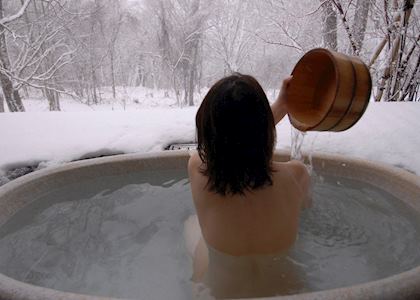
Visiting Japan in January
The weather is usually cool, dry and sunny during January and sites are much less crowded than later in the year. In northern Japan there is heavy snowfall making conditions good for skiing.
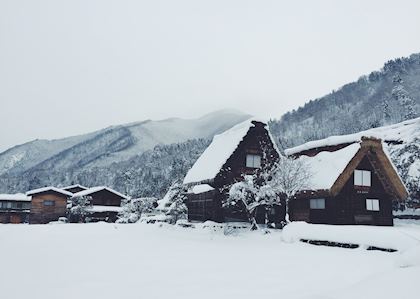
Visiting Japan in February
February is the peak of the ski season in northern Japan. Across the country days are generally cool, dry and sunny and many attractions are less busy than at other times of the year.
Events & Festivals
- For one week in early February, Sapporo is overrun with enormous ice and snow sculptures, built in the central Odori Park as part of the Sapporo Snow Festival.
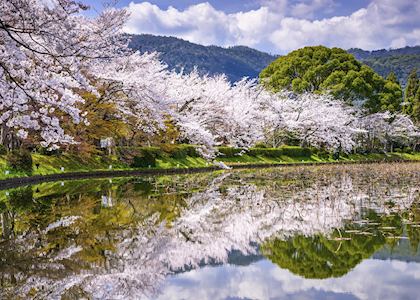
Visiting Japan in March
The weather starts to get milder in March and blossom on the plum trees marks the beginning of spring. Toward the end of March the cherry blossom begins to emerge in the south of the country, which is celebrated by the Japanese with picnics in local parks. As this season is a popular time to visit Japan, the country gets very busy toward the end of the month.
- The cherry blossom spreads north through mainland Japan.

Visiting Japan in April
This is the peak viewing time for the cherry blossom as the trees start to bloom further north. The blossom during this time is beautiful and provides a magical experience, but if you travel during this time you have to expect everywhere to be very busy, and hotel rates escalate too.
- Known as one of Japan’s top three most beautiful festivals, the Takayama Matsuri is held in the old town of Takayama where floats and shrines are paraded through the streets.
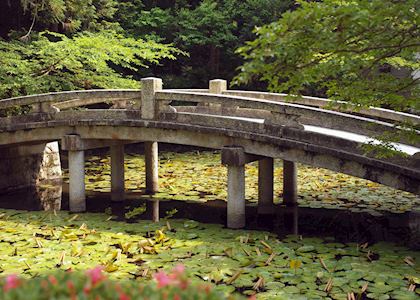
Visiting Japan in May
The weather in May is pleasantly warm and usually dry, and the vegetation is green and vibrant. Cherry blossom only reaches the northern parts of Hokkaido by this month, while in Okinawa , May is the rainy season. The first week of May is Golden Week, a national holiday and one of the busiest weeks of the year for domestic travelers.
- Asakusa in Tokyo is the center for the Sanja Matsuri, held on the third full weekend in May. Colorful floats and shrines, accompanied by musicians and dancers in traditional Edo period costumes parade between Sensoji Temple and Asakusa Shrine.

Visiting Japan in June
This time of year is hot and humid and there is typically rain in most parts of Japan. This means that the trees and plants are at their most vibrant, and Japan’s gardens are particularly beautiful.
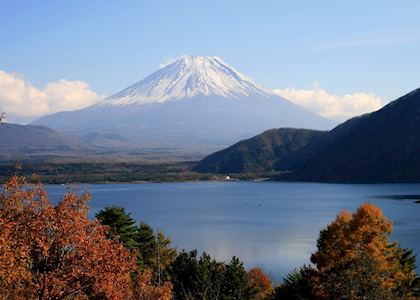
Visiting Japan in July
There are numerous festivals held all over Japan in July, making it a lively time to visit. The rainy season generally ends across most of Japan by the end of the first half of the month, but the humidity continues. July is also one of the best months to climb Mount Fuji , a hike which is only possible during the more favorable conditions of the warmer months. This is the peak season for domestic tourism and also sees the highest levels of rain and threat of high winds in Okinawa.
- Japan’s most famous festival, the Kyoto Matsuri, is held in Kyoto and dates back to the 9th century when it began as a religious ceremony to appease the gods. Enormous floats are marched through the streets throughout the month, although they are most impressive on July 17th.
- In the 7th lunar month, as part of the Obon Festival to honor the dead, the Awa Odori is held in Tokushima on Shikoku Island. Musicians and dancers flood the streets in vibrant costumes.
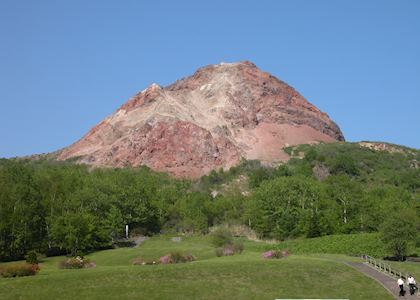
Visiting Japan in August
Festivals continue across Japan during August and this is a busy domestic travel period as it is the school vacations. The weather is generally hot and humid across the country, with Hokkaido being cooler and more comfortable.
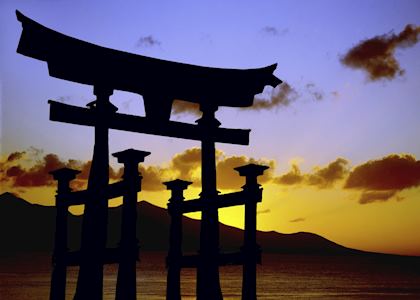
Visiting Japan in September
The domestic crowds associated with August have usually dissipated by September and skies are often clear and blue, although the weather can still be hot and humid. In late September the leaves start to change color in Hokkaido , a process which makes its way south over the next few weeks. Toward the end of September there is a five-day national holiday known as Silver Week, during which prices increase dramatically as the Japanese travel about the country. Silver Week only occurs every few years.
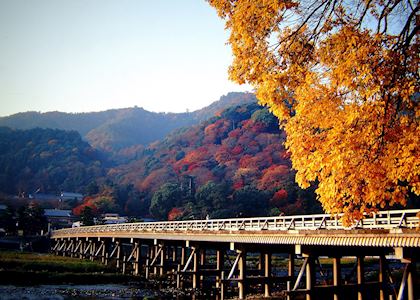
Visiting Japan in October
This is the start of the fall season for mainland Japan and brings striking red and gold hues to the landscape. The weather begins to cool down from the heat of the summer, making October a pleasant time to visit.
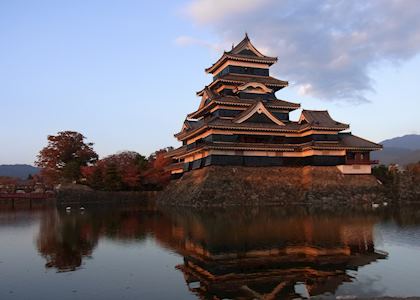
Visiting Japan in November
This is the peak time to see the colorful leaves in mainland Japan. Traveling around tends to be much quieter during this month, and the weather is pleasantly cool and mild.

Visiting Japan in December
The weather is cool and typically dry in December, and the country isn’t busy for the first couple of weeks which makes it a good time to visit if you don’t mind the chilly temperatures. Ryokan properties don’t tend to have much in the way of heating so staying here can be cold. However, outdoor onsens can be really special experiences during the winter months, particularly in the north of Japan where you can be bathing in natural thermal hot springs yet surrounded by snow. Towards the end of December it gets busier as the school vacations start, and some attractions close in the run-up to the New Year.
Japan Climate Guide
Why travel with audley.
- 100% tailor-made tours
- Fully protected travel
- Established for over 25 years
- 98% of our clients would recommend us

Travel advice
Practical tips for traveling to Japan, from social protocols to guidance on money matters, with a link to the latest US State Department travel advice.

Request our brochure
Covering all seven continents, The World Your Way shows you how you can see the world with us. It features trip ideas from our specialists alongside hand-picked stays and experiences, and introduces our approach to creating meaningful travel experiences.
Trip ideas and travel guides for exploring Japan

Japan's cities: Tokyo & Kyoto
8 days from $4,875pp
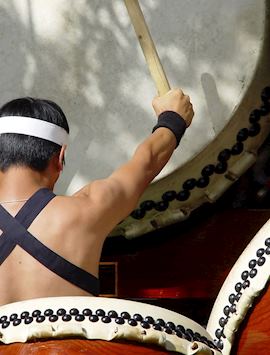

Japan family adventure
14 days from $6,195pp
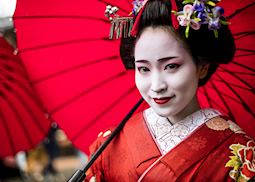
What to do in Japan: our highlights guide

Value Japan: how to make your money go further


The Best Time to Visit Japan: A Complete Guide

- When Is the Best Time to Visit Japan?
This complete guide will give you all of the information you need to decide when the best time to visit to Japan is for you. We’ll take a look at the pros and cons of visiting Japan in certain seasons, and other factors (such as cost, weather, crowds and seasonal cuisine) which might influence your choice.
With so many season-specific attractions and events (such as cherry blossom viewing, hiking Mt. Fuji and attending vibrant festivals) the question of when to visit needs careful consideration by potential travelers.
Rated as one of the top ten countries in the world for tourism by the Travel and Tourism Competitiveness Report , Japan outranked all other countries in Asia. With all of it’s beautiful nature, technology, bright lights, and amazing food, Japan is a must-visit country.
The numbers of foreign visitors to Japan has more than tripled in the last fifteen years, with nearly 20 million international tourists visiting in 2015. So what are you waiting for? Use this guide and plan your next trip to Japan!
Temperature in Major Cities
Things to do in spring, spring festivals, popular foods in spring, important points to consider, pros and cons: spring in japan, weather in summer, fashion in summer, things to do in summer, festivals in summer, popular foods in summer, pros vs cons: summer in japan, fall fashion, things to see in the fall, festivals in the fall, popular fall foods, pros vs cons: fall in japan, weather in winter, festivals in winter, popular foods in winter, pros and cons: winter in japan, best time to travel by price/peak times of travel, times to avoid: peak seasons of travel/bad weather, other times to avoid if possible, insider’s tip, the best season to visit japan.
One of the major points to consider when choosing when to visit Japan is the season.
Japan is a country with plenty of natural beauty, and if there are certain events that you want to catch, you’ll have to visit at the right time.
When summers or winters are unexpectedly cold or hot, this can affect seasonal changes that bring the autumn leaves or the blooming of the cherry blossoms, sometimes by as much as several weeks.
If you’re booking flights months in advance, this can be a risky element to your trip. If there are certain events that you just have to see, I recommend coming to Japan for as long as possible to give yourself a good window in which to catch it. But however long you visit for, the season is of key importance.
Let’s take a look at each season in detail to see which time of year is best for you.

Springtime (March – May) is usually dubbed as the best time to visit Japan. However, there are pros and cons, and a lot of it depends on which part of the country you are visiting.

The north of Japan is often cold and snowy for about half the year, while the southern-most point is warm and tropical, and everything in between is a mix of the two. So saying whether a certain time of year is either cold or warm in Japan isn’t a cut and dried answer.
However, it is fairly universally held that spring is a nice time throughout all of Japan.
The weather is quite mild at both ends, with warm days and evenings that verge on chilly. You’ll need a warm sweater and jacket to visit Hokkaido at this time of year, but in the south, you could easily go out in a light sweater or even a t-shirt and shorts during the daytime.
Depending on where you are, spring can be a difficult season to dress for – in early spring, even if the day starts out warm it can soon turn cold once the sun goes down. The spring seasons usually starts off dry, but often ends on a rainy note after the cherry blossom season.
Looking at three major cities, average temperatures in spring get steadily warmer throughout the season.
- Tokyo : The beginning of spring sees lows of 6°C (43°F), while the end of the season sees highs of 23°C (73°F)
- Kyoto: The season starts with lows of 4°C (39°F) and ends with high temperatures of 24°C (75°F)
- Sapporo (Hokkaido): The spring is much colder than Tokyo, with lows in March of -3°C (27°F), and ending the spring with highs of 17°C (63°F)
Regarding attractions, the biggest draw for visitors in spring is the cherry blossom viewing.

One thing is for sure: you can chase the blossoms all the way up through the country from the south to the north – the warmer weather in Kyushu means that they get the cherry blossoms first, and it can be several weeks before the same flowers bloom up in Hokkaido. Check the annual cherry blossom forecast to see when the experts predict that they’ll bloom.
Other good reasons to visit in springtime include the festivals of the season.

There are many popular and unusual festivals at this time of year, including the Aso Fire Festival (March), the Kamakura Festival (April), Children’s Day (May 5th), the vibrant Hakata Dontaku Festival in Fukuoka (May 3rd and 4th), the Hamamatsu Kite Flying Festival (May 3rd – 5th), and Honbasho – The Great Sumo Tournament (May – although sumo tournaments are held year-round).
Golden Week is also in the spring, and is one of the worst times to visit Japan as an international tourist because this is the time of year when Japanese tourists are also flitting all over the country.
Seasonal cuisine in Japan is not so exciting in spring as it is in other seasons.
One of the main things you see a lot at this time of year are “picnic bentos” in the supermarkets, where you can buy a platter of snacks and salads to share when you go viewing cherry blossoms with friends and family.
Of course, there are dozens of cherry blossom flavored goodies, such as sakura ice-cream and sakura Kit-Kat chocolate bars. As well as cherry blossoms, the plum blossoms are also in season, and you can get sour pickled ume (plum) to snack on, as well as ume flavored potato chips and other treats. Bamboo shoots are popular at this time of year, as are strawberries.
While spring is popularly thought of as the best time to visit Japan, it certainly has its downsides too.

Firstly, the Golden Week holiday is a nightmare time to travel – attractions are crowded, accommodation books out fast and often costs more, and travel becomes more difficult too.
The weather can be unpredictable, and the beauty of the cherry blossoms can be cut short by an early rain. However, despite this, it still remains a favorite time to visit. The weather at this time of year is milder and less extreme than the boiling hot summer and cold winter, and while it can be rainy, it’s usually not too intense.
Festivals are popular in the spring season and, after the winter, people tend to be in a good mood at this time of year.
Another thing to take into consideration is that the spring season also brings about allergies for certain people.
Drifting pollen from Cryptomeria and Japanese cypress trees often peak during the spring season. If you have hay fever or are prone to allergies from pollen, the spring season in Japan may aggravate your symptoms.
- Nice, mild weather, perfect for walking around
- Cherry blossom viewing season
- Lots of festivals
- A popular time to travel for both locals and tourists, which make it very difficult to get around
- The end of March is when most public schools start their vacation, which results in more travel among Japanese locals. However, Golden Week (usually the end of April to the first week of May) is crazy busy.
- Try to avoid traveling during Golden Week if possible. Bullet trains and buses are usually crowded, making it difficult to get reservations
- Hotels and certain attractions also increase their prices during Golden Week
- Those with pollen allergies might want to be careful. Pollen in the air usually reaches its peak during spring

Summertime in Japan (June – August) is one of those times that some people love and some people hate. This depends on where you come from and the climate you are used to.
Japan rarely sees extreme temperatures in the summer, but with the high humidity, it makes walking or even standing outside uncomfortable.
Temperatures over 34°C (93°F) is rare but does happen occasionally, with the highest recorded temperature in Japan reaching over 40°C (104°F).
However, if you come from somewhere mild, even the high 20’s can seem unbearable with the very high humidity. If you don’t deal with heat well, this is something to consider seriously.
As well as the heat, the weather is not perfect at this time of year. Early summer (June) is usually when the rainy season starts – this is the time when rice farmers do lots of their planting and is a busy time of year for agriculture.
However, for tourists, it isn’t ideal to go sightseeing in the rain day after day for weeks on end. Once the rain stops, you’re blasted with the full heat of summer before typhoon season hits.
Typhoons that actually hit and do damage are not so common in Japan – just a few major ones tend to hit annually. However, there have been more in recent years. The days after a typhoon are called taifu ikka, which refers to the good weather which you see after a typhoon has passed.
In terms of temperatures, the south of Japan sees the hottest summers while it is relatively cool up in the north. Activities like hiking and camping are popular at this time of year as a way to escape the heat.
- Tokyo: Average temperatures for summer see lows of 19°C (66°F), going up to 31°C (88°F) by the end of August.
- Kyoto: Lows of 19°C (66°F) and highs of 33°C (91°F) in August.
- Sapporo: Lows are around 13°C (55°F) while the highest temperatures peak at a pleasant 26°C (79°F).
Warmer temperatures are common in the south. This is t-shirt weather through and through! Don’t forget your hat and sunglasses during these seasons, though of course you can also pick up any seasonal accessories you need at any of the 100 yen shops around the country.

Synonymous with summer in Japan is the wearing of yukata. Unlike kimonos (which are bulky, cumbersome and fairly uncomfortable) a yukata is basically like a Japanese dressing gown made of light cotton, and is comfy to wear when it is hot out.
Whether or not you’re interested in trying out the Japanese summer clothing styles, you absolutely must get yourself a traditional summer handkerchief.
Most Japanese people have one of these little rags stuffed into their pocket or handbag the whole year through, but they are particularly useful in summer when you sweat profusely and need to wipe your face every five minutes.
You can get cheap handkerchiefs in many shops in Japan (even supermarkets and convenience stores), but there are also specialist shops where you can purchase beautiful handkerchiefs in traditional designs, and even get your name embroidered on them. These make excellent souvenirs and are a lovely gift item too.

As well as visiting hot springs and going hiking, other popular pastimes in this season include visiting the beach (though watch out during jellyfish season) and of course attending the seasonal festivals. Fireworks play a heavy part in the summer celebrations, and you can see displays all around the country when the weather gets warmer.
Hiking Mt. Fuji is also another popular event in the summer.

While you may sweat and feel hot in the beginning, it will be very cold when you reach the top. So prepare accordingly.

Top festivals include Osaka’s Rice Planting Festival (June 14th), Fukuoka’s spectacular Hakata Gion Yamakasa Festival (July 1st – 15th), Osaka’s Tenjin Festival (July 24th and 25th), Hiroshima’s Peace Memorial Ceremony (August 6th), the Yamaga Lantern Festival (August 15th and 16th) and Kyoto’s Daimonji Bonfire Festival (August 16th).

Like spring, summertime in Japan is also made difficult for travelers by a long national holiday.
Obon (mid-August event to pay respects to your ancestors) takes place during the best part of the summer and is one of the busiest, most expensive times of the year to travel. Even the bullet trains can get so crowded that there isn’t even room to stand (picture a can of sardines, but with people).
June is the rainy season, so if you plan on doing a lot of outdoor activities, you need to plan ahead and be prepared for possible rain.
As for food, the hot weather may cause you to lose your appetite, but there are plenty of refreshing snacks which have been tailor made for this season.
Cold somen noodles are a popular dish – after being cooked, they are plunged into icy water and served with cold vegetables and refreshing sauce. It doesn’t sound appetizing but, trust me, it does the trick!
Also, what with all the festivals that take place during the summer, this is the perfect time to try out some typical Japanese street food and snacks which you can buy at food stalls.
Yakitori (grilled meat on a stick), okonomiyaki (“Japanese pizza”), takoyaki (octopus balls) and fried squid are all top choices and available all over the place.
If you fancy something sweet, try out kakigori – shaved ice flavored with toxic-looking flavorings and a dollop of condensed milk. This is popular with kids and good to try once but, to be honest, you’re better off just getting a regular ice-cream from a convenience store unless you’re really in the mood for a snow cone.
Ice cream products in Japan are awesome, and there are great local choices to try such as green tea flavored ice cream, and of course yukimi daifuku – balls of ice-cream which are nestled inside a skin of chewy mochi (aka, mochi ice cream).
- Awesome festivals
- Lots of good summer foods to try
- Good for hiking (especially to hike Mt. Fuji)
- Unforgivingly hot and humid weather
- Traveling during the Obon season (mid-August) is very, very busy
- Traveling to and from Japan is generally more expensive in August
Fall/Autumn

Like spring, fall is a time when you can enjoy milder temperatures that are a great mid-point between the harsh heat of summer and the cold bite of winter. Typhoon season creeps into the first part of the fall but is usually over by mid/late September. After that, the weather is usually nice until winter, with relatively little rain at this time of year.
Fall in Japan is a wonderful time to enjoy the great outdoors.

Temperatures in the fall are still hot and summery during September, but cool down to warmer temperatures in October and November.
- Tokyo: The season starts with lows of 21°C (70°F) and highs of 28°C (82°F), and by the end of fall, temperatures are in the 10-17°C (50°- 63°F) range
- Kyoto: Temperatures start at 20°C (68°F) to 28°C (82°F), and then the season ends with temperatures of 8 – 17°C (46 – 63°F).
- Sapporo: Early fall temperatures reach highs of 22°C (72°F), but by the end of the season you’ll be somewhere in the 2-8°C (36 – 46°F) range. However, the change is gradual, and after the relentless heat of summer, it’s always nice to return to kinder temperatures
As for clothing, at the start of the season you’ll still be in summer-wear, but by the end of November it’ll be long-sleeved t-shirts and lightweight jackets, or something much warmer if you’re up in the north.
Both spring and fall have cooler temperatures and amazing, beautiful nature which is the main reason to visit at this time.

If you have the chance to visit somewhere away from the big cities, up in the hills and away from it all, these are the spots where autumn leaves are most majestic. An hour outside of Tokyo, Hakone is my personal favorite place for viewing autumn leaves.
Unlike the cherry blossoms, this change takes place from the top down, with leaves changing color in the north of Japan during mid-September, and finishing up in the south of Kyushu around mid-December. Like the cherry blossoms, it can be hard to predict exactly, but you can research the official autumn leaf forecast for updates nearer the time.

Aside from the autumnal leaves, there are other events to enjoy. There are some regional and small festivals to enjoy during your trip.
There is the Kumamoto Horse Festival (September), Okinawa’s Paantu Punaha Mud Festival (early September), the Naha Festival (October 10th) and the Nagasaki Kunchi Festival (October 7th – 9th).

While Japan may not have much going on in terms of festivals in the fall, it is certainly a peak time to visit in terms of cuisine. There are lots of delicious vegetables and fruits which are in season during the fall.
Many of them are featured on restaurant menus, and you can also pick them up fairly cheaply from local markets. Sweet potatoes, taro, pumpkin, and mushrooms are all popular vegetables in the fall.
You can buy yaki imo (baked sweet potatoes) from roadside stalls – a great and healthy snack for when the weather is getting colder.
Citrus fruits are available all year round in Japan. In the fall, the citrus fruit of choice is sudachi – it looks like a cross between an orange and a lime, and tends to be easy to peel with thin skin.
However, this fruit is not really eaten straight, as it is just as sour as a lemon or lime. It is more commonly used to flavor foods. Chestnuts are also popular in the fall, and can be found roasted or used in a variety of desserts.
- The weather is very comfortable (especially from late September – late October)
- Stunning natural beauty (autumn leaves)
- Attractions and transportation are less crowded than the summer or spring (except during Silver Week and three-day weekends)
- A lot less options when it comes to festivals and other events
- Weather in October – November can be unpredictable. It can be hot one day, and cold the next.
Wintertime in Japan (December – February) is cold across the board, with similar temperatures throughout the three months of winter.

The weather tends to be good at this time of year – cold, but crisp and dry, with little to no rain at all. You’ll need to dress warmly in these seasons, and the weather can be deceptive so be prepared.
During the Christmas holiday in the winter of 2016, daytime temperatures jumped from 4°C (39°F) to 19°C (66°F) with just a few days in between – so even if the weather looks like it’s going to be warmer than usual, it probably won’t last, so be prepared with hats, gloves and other accessories.
- Tokyo: Temperatures are similar in all three of the winter months, with lows of 2°C (36°F) and highs of 13°C (55°F). Last year, Tokyo saw snow in November for the first time in over half a century
- Kyoto: A little colder than Tokyo with winter lows of 1°C (34°F) and highs of 11°C (52°F)
- Sapporo: Winter is the perfect time for sports like skiing and snowboarding, with lows of -7°C (19°F) and highs of just 2°C (36°F)

The most well-known festival of the season is the Sapporo Snow Festival which runs for a week every February (usually early February). Roughly two million people attend the festival each year, where you can see ice sculptures and snow statues, many of which have been built by local residents.
Each year around 400 statues are built – a far cry from the first ever Sapporo Snow Festival in 1950 where six high school students built six snow statues in the city park. The exquisite statues often depict a celebrity, or something popular from the previous year. Illuminations bring the whole place to life at night.
Other festivals include New Year celebrations across the country (January), the Naked Festival at Okayama (February), the Nara Lantern Festival (February 3rd) and the Yokote Kamakura Snow Festival (February 15th and 16th).

A few days each year (usually on select days in January and February) they have a special “lite-up” event, where the houses are illuminated. While the weather is freezing, the houses look absolutely magical, and are worth a visit if you have the time.
New Years Eve is a more reserved celebration than in other countries. In Japan the focus is more on New Years Day which is typically a family time.
Food in winter is typically warming and hearty, as one might expect from the weather.
Hot pots (known as nabe) are a popular dish, and there are many nabe restaurants where the food cooks in front of you – use your chopsticks to take what you want when it’s ready. This is a great meal to have with friends around a big table.
Popular winter vegetables are the giant Japanese radish and lotus root, which can be prepared in a variety of ways.
The famously poisonous fugu (puffer fish) is often eaten in winter, and the citrus fruits of the season are mikan (mandarin oranges) and yuzu (like a cross between a lemon and a grapefruit). Tofu is also popular in winter and you can usually see some creamy white chunks of it floating around when you order hot pot.
- Food is hearty and this time of year, and washed down with a warming glass of hot sake is the perfect way end a day full of traveling
- For seafood fans, winter is when crabs are in season, and taste the best.
- Great ski slopes around Japan for winter sports
- Amazing winter festivals
- Many attractions close their doors for at least a few days around the New Year
- Traveling the last week of December – the first week of January is busy and expensive
Aside from seasonal events and changes in the weather and temperature, there are other points to consider when choosing the best time for your trip to Japan.
Cost is often a major factor for travelers, particularly if you’re hoping to travel cheaply.
While Japan is a fairly cheap place to be a tourist (with good deals in restaurants and supermarkets, as well as reasonable entry fees to attractions) getting around can be expensive as the public transport is so costly, and accommodation prices rocket during the peak seasons.
As well as cost, there are certain times of the year when traveling in Japan is bound to be a nightmare.
Working life can be pretty rubbish in Japan, mainly because of the tiny amounts of holiday given to workers and the fact that everyone has to take their vacation at the same time – making life difficult for foreign tourists too. Let’s take a look at some of these issues which you need to consider when planning a trip to Japan.
Peak seasons should be avoided altogether if you can help it.
- Golden Week (late April – early May)
- Obon Festival (mid-August, lasting around a week)
- Silver Week (late September)
- The Month of June (Rainy Season – This isn’t a deal-breaker if you plan on doing indoor activities like shopping)
Silver week is certainly less crazy than the other two holidays but has been gaining popularity in recent years. These three times are when, basically, all of Japan goes on holiday.

What this means is that trains and buses are usually booked solid. If you try to take a train using an unreserved ticket (no seat assignment), you’ll face big queues and long waits. And the possibility of you having to stand the whole way is very possible.
Also, attractions are crowded, and this can ruin the point of visiting it in the first place. Accommodation books out way in advance or raises its prices, and restaurants book out or have long waits– the whole experience is basically crowded, expensive and stressful. Trust me, any other time of year is preferable!

The summer vacation when children are off from school (late July to September) can also be a busy time to travel. Like everywhere in the world, Saturdays and Sundays are often crowded and public transport can be cramped, and restaurants often offer certain deals which are only available during a weekday.
A few attractions close their doors on Mondays, so if it is possible, try to plan your trip to arrive on a Monday night or a Tuesday, and then leave Japan (a few weeks later!) on a Friday.
Perhaps you’re planning a trip to Japan especially for one of the popular events, such as viewing the cherry blossoms or the changing of the autumn leaves. These things are not to be missed, but also come with a price-tag as places tend to up their prices during these seasons.

If you can’t avoid visiting during a peak season, plan your trip as early in advance as you can and try to choose cheaper, local accommodation over these periods. Traditional ryokans (Japanese inns) raise their prices too, but can still be the cheaper option.
Depending on which regions you want to visit, one way to save money is with a Japan Rail Pass. This can’t be bought in Japan– it’s only for foreign tourists and so you’ll need to order one in advance. The pass is expensive, but way cheaper than buying individual tickets in Japan (train travel is very expensive).
If you plan to be darting all around the country and doing a lot of traveling outside of big cities, the rail pass is a must. However, if you don’t think you’ll get your money’s worth out of a pass, snub the rail altogether and fly.
Domestic flights in Japan are often really cheap, sometimes half the price of taking the bullet train to the same destination. Budget airlines and discount airfare companies like Jet Star, Star Alliance Japan Airpass, and OneWorld Yokoso/Visit Japan Fare are a much better alternative to costly rail travel.
Japan is an awesome place to travel, and one of the nicest places in the world to be a tourist.
People are polite and friendly, there is a good amount of English language information in the big cities, it’s safe and hygienic, travel is (usually) efficient and is just a beautiful place.
Hopefully this article has helped to shed some light on the impossible choice and you have a better idea about which season is suited to your Japan trip. Leave us a comment and let us know which season you think sounds the best!
Celia Jenkins
Leave a comment cancel reply.
This site uses Akismet to reduce spam. Learn how your comment data is processed .
This site contains affiliate links to products and services we recommend or review. If you click through the links we provide and make a purchase, we may earn a commission.
As an Amazon Associate, I earn from qualifying purchases.
Copyright © 2023 The True Japan
Weather in Japan by Month: Best Time to Visit

Jennifer Tijssen has loved Japanese culture for as long as she can remember. It started out with children’s animation shows but soon branched out to include all that this lovely country has to offer. Having studied Japanese language and culture in university, she came to Japan in 2022 fully equipped to experience the country. Her interests include cuisine, design, sociology and flora and fauna.
Curious about when is the best time to visit Japan? Let’s take a closer look at Japan’s weather and break it down month by month. We’ll also discuss any seasonal weather extremes that are important to be aware of.
Japan has four seasons , something that is highlighted in Japanese culture and gets celebrated throughout the country, with Japanese people usually paying a lot of attention to the small signs indicating the changing of the seasons: activities and events like splitting watermelons, catching beetles or watching fireworks are only practiced during certain seasons, and season-dependant products and produce fill the shelves in shops and supermarkets.
Japan Wonder Travel Tours
Other articles you might be interested in.
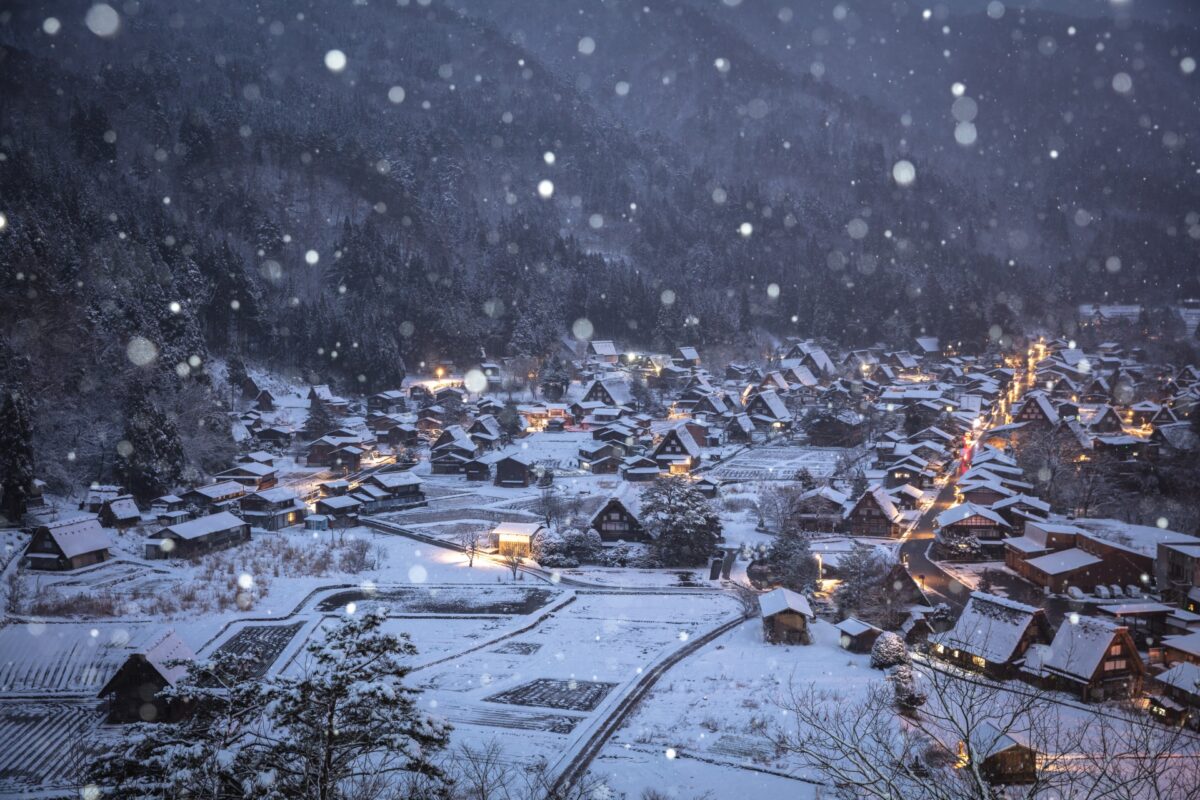
January means winter in Japan, and this month clocks the coldest temperatures of the year. In Tokyo , this means average daily temperatures of around 41°F (5°C). There might be some snow, but in general Tokyo rarely sees any snow accumulation. If you were hoping for a winter retreat in Kyushu , southern cities like Fukuoka are unfortunately not very different from Tokyo. For something warmer, consider Okinawa which sees average daily temperatures of 64°F (18°C). The northernmost prefecture of Hokkaido sees temperatures of 25°F (-4°C) on average.
As January marks the start of the new year, Japan enjoys a national holiday from 1st-3rd of January. During this period, many Japanese partake in hatsumode , the first visit to a temple or shrine in the new year, to pray for good fortune in the year to come.
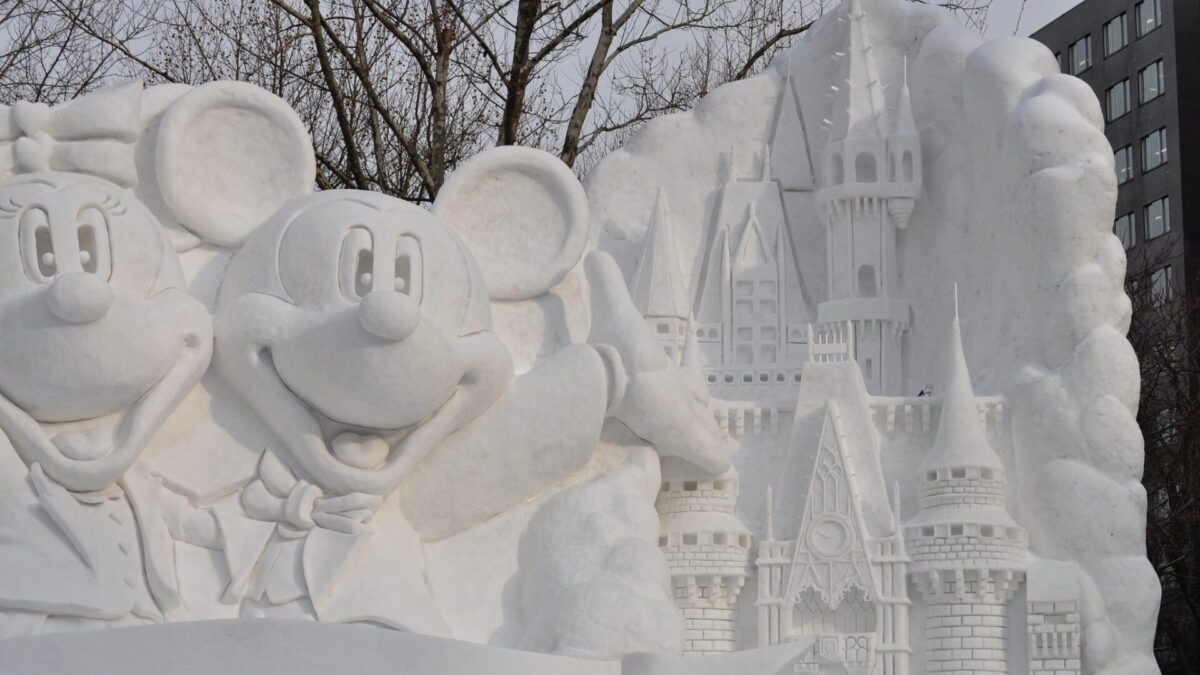
The last month of the Japanese winter, February, still calls for the cozy warmth of a heated kotatsu table in most Japanese homes . Temperatures rise to highs of 52°F (11°C) and lows of 35°F (2°C) in Tokyo, Kyoto and Osaka .
February is also the month of the Sapporo Snow Festival , a hugely popular event in Hokkaido featuring magnificent ice and snow sculptures. Average daily temperatures hover around 37°F (3°C), so be sure to dress accordingly when you visit.

The beginning of spring also marks a significant change in the weather and temperature, with Tokyo, Kyoto and Osaka climbing rapidly to 50°F (10°C). Mid to late March is a special time in Japan – this is when the cherry blossoms ( sakura ) start to bloom in mainland Japan’s southern regions! Refer to the special sakura forecast information drawn up by Japanese meteorological institutes to confirm the timing of your trip to catch this unique flower extravaganza.
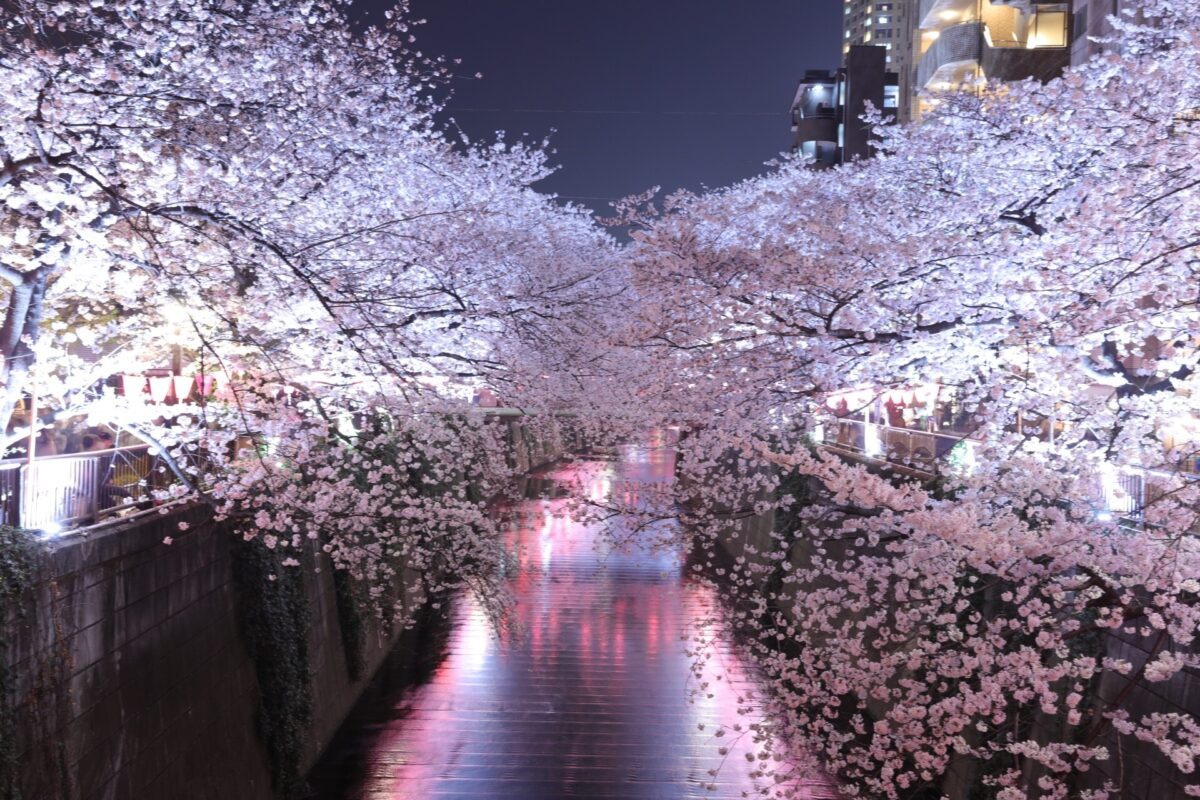
April is the beginning of the new academic and financial year in Japan. This period is inseparably linked to the image of cherry blossoms in full bloom throughout the country. With average daily temperatures of 60°F (15°C) in the major cities of Tokyo, Kyoto and Osaka, the weather is perfect for a picnic under the clouds of delicate pink flowers. April is definitely one of the best – and busiest – months to visit Japan!
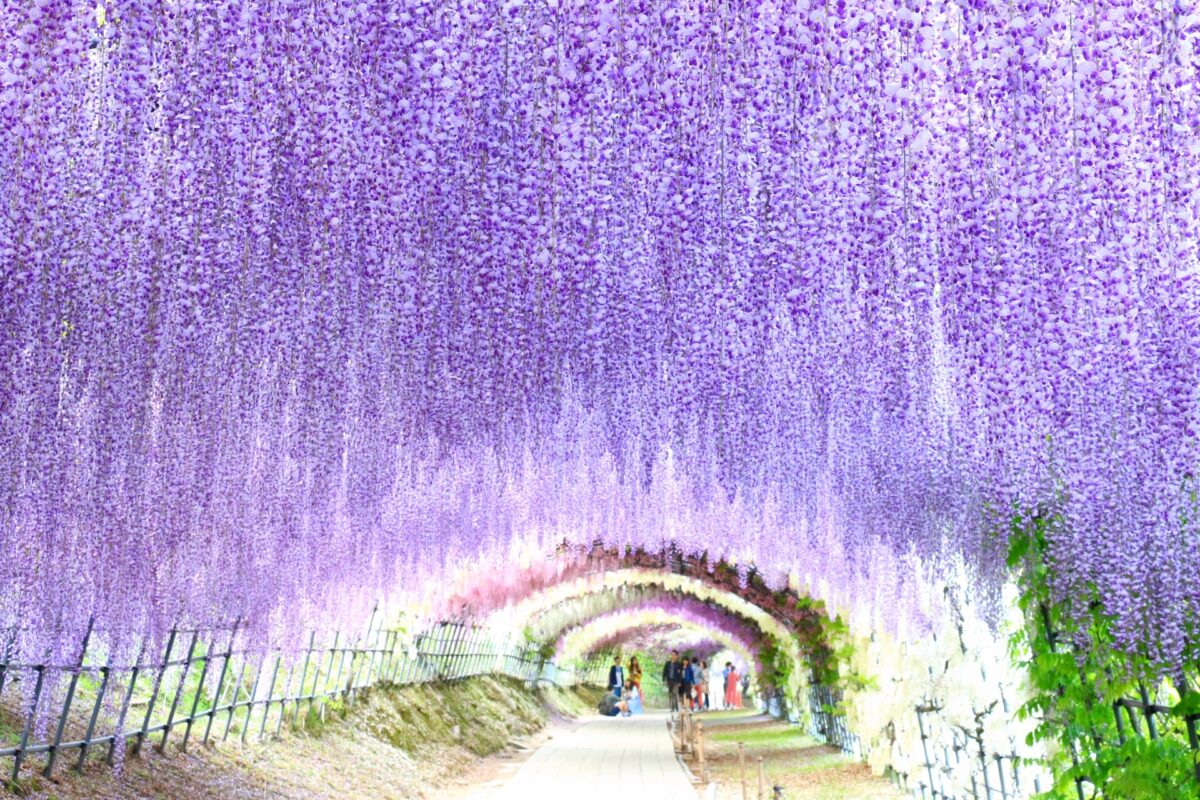
The lovely spring weather continues into May, with comfortable temperatures of just under 70°F (20°C) on average on mainland Japan. Golden Week , a week of national holidays, falls in the last days of April and the first days of May. As it’s one of Japan’s busiest travel periods, accommodation will be harder to come by and travel expenses will be higher than usual, so it might be best to avoid this week. The rest of May is a wonderful time to explore Japan.
Hokkaido experiences most of its sakura blooming in May . Combined with average temperatures of around 57°F (14°C) and low levels of precipitation, this makes Hokkaido a worthwhile place to travel in May. Avoid Okinawa though, as the rainy season there starts around this time.
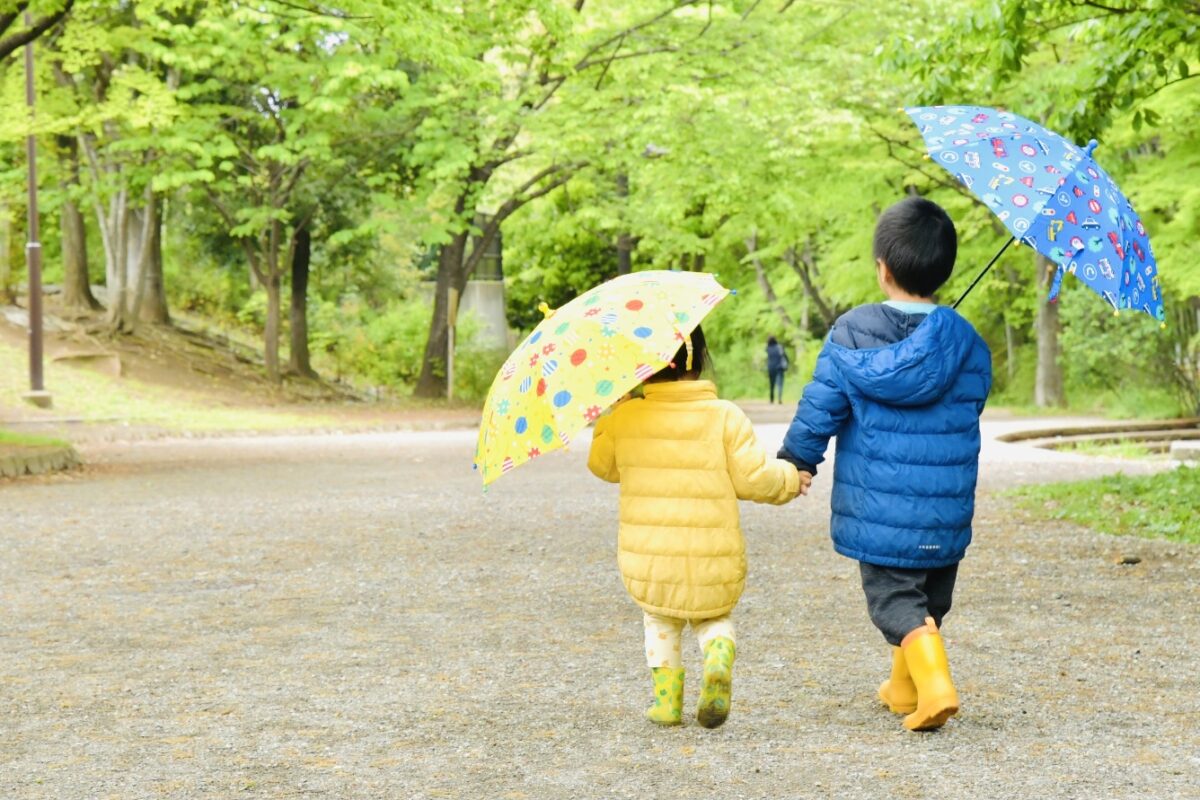
June is known as the rainy season in most of Japan, a period of heavy rainfall and cloudy weather. The rainy season varies in intensity from year to year, but in general the rainfall rarely causes trouble while travelling except for in areas prone to landslides and flooding from rivers. Convenience stores sell umbrellas on every corner, so don’t worry about getting caught in a storm unprepared.
Apart from the precipitation, June’s weather is quite pleasant, with average daily temperatures of 72°F (22°C) in the major cities. Hokkaido is also very enjoyable this time of the year, with low rainfall and temperatures around 63°F (17°C).
The end of the rainy season marks the start of summer in Japan.

July brings hot and humid summer weather. Although the humidity might be uncomfortable on hot days, rest assured that there is air conditioning to be found in almost all buildings. There’s also no shortage of refreshments from vending machines that can be found on just about every street, dispensing bottles of cold water, tea, coffee or soda.
Temperatures of 95°F (35°C) are not uncommon on mainland Japan (although the average temperature is around 79°F (26°C)), so be sure to bring breathable clothes and maybe pick up a handy sweat towel which most Japanese carry with them in summer. In the warm evenings, enjoy the fun and vibrant summer festivals like Tanabata or Gion.
An escape from the summer heat may be found in Hokkaido where temperatures are generally 10°F (5°C) lower than in Tokyo.
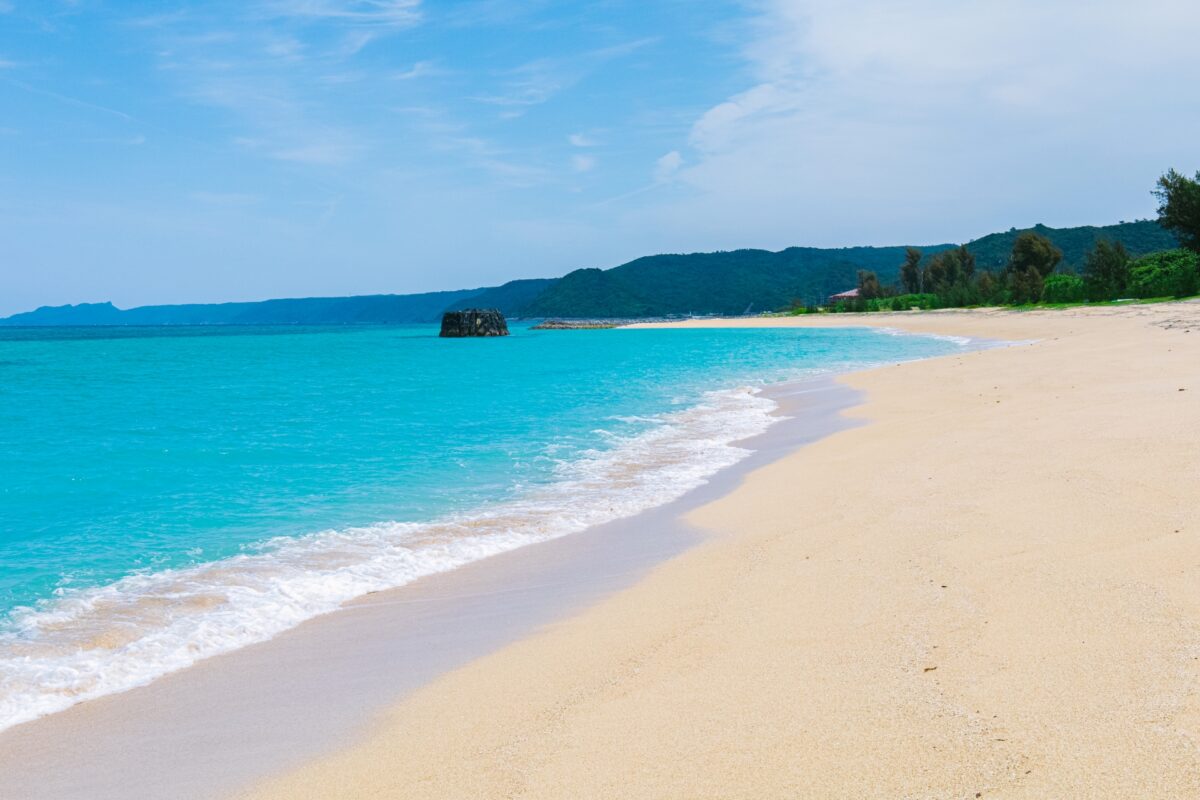
The month of August continues July’s trend of hot, humid weather with average daily temperatures of 79°F (26°C), but the high humidity can make it feel hotter than that. August sees even more festivities than July, with an abundance of firework festivals , lantern festivals and the nationwide Obon holidays , providing plenty of opportunities to dress up in a summer yukata .
At the same time, August is the peak of typhoon season . However, there’s no need to alter travel plans because of typhoons as in most cases they are unlikely to become a hindrance, but they might affect outdoor activities and cause rescheduling if the rain and wind are strong.
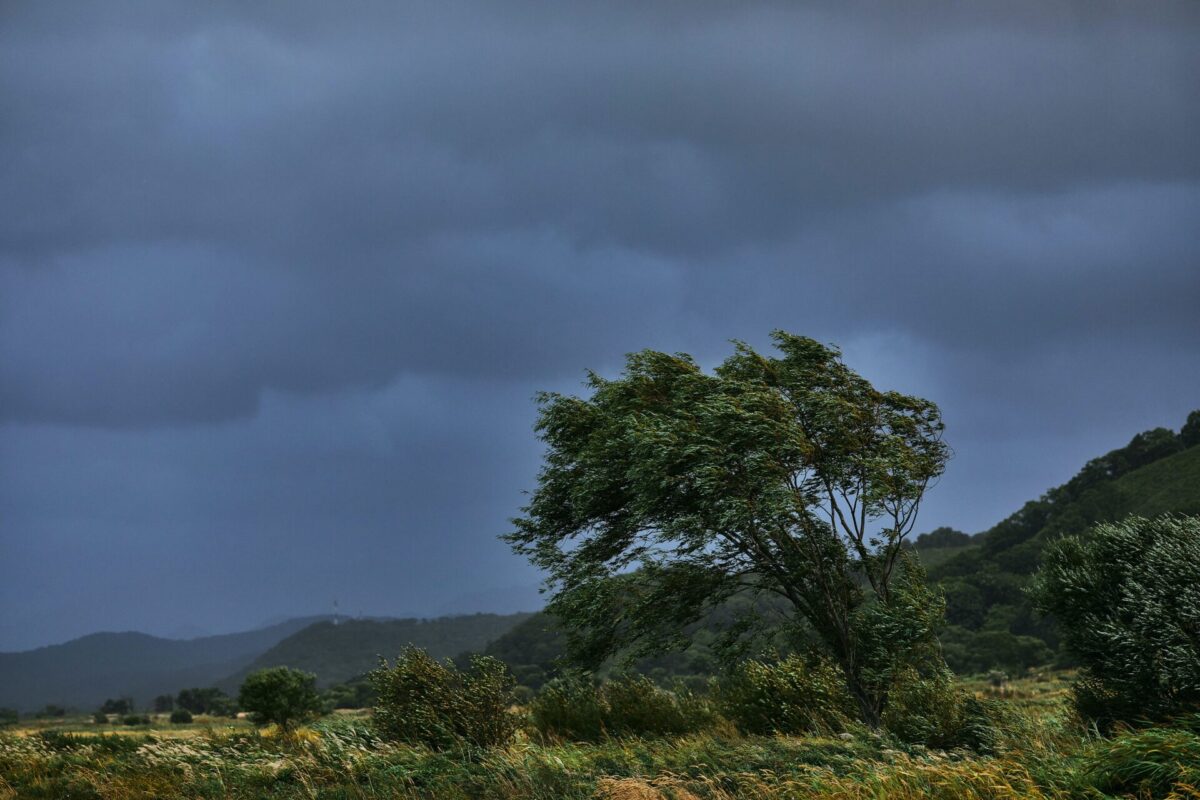
September may still see an occasional heavy storm as the typhoon season comes to an end. The summer heat is making its retreat from mainland Japan, with temperatures in Tokyo, Kyoto and Osaka dipping below 77°F (25°C). As summer slowly makes way for fall, the northern regions of Japan get ready to marvel at the beautiful autumn foliage. Similar to the sakura forecast, the Japanese meteorological institutes prepare a forecast predicting the best time to view the gorgeous red and orange hues of the leaves. Sapporo enjoys this spectacle in late September, as do regions with higher elevation.
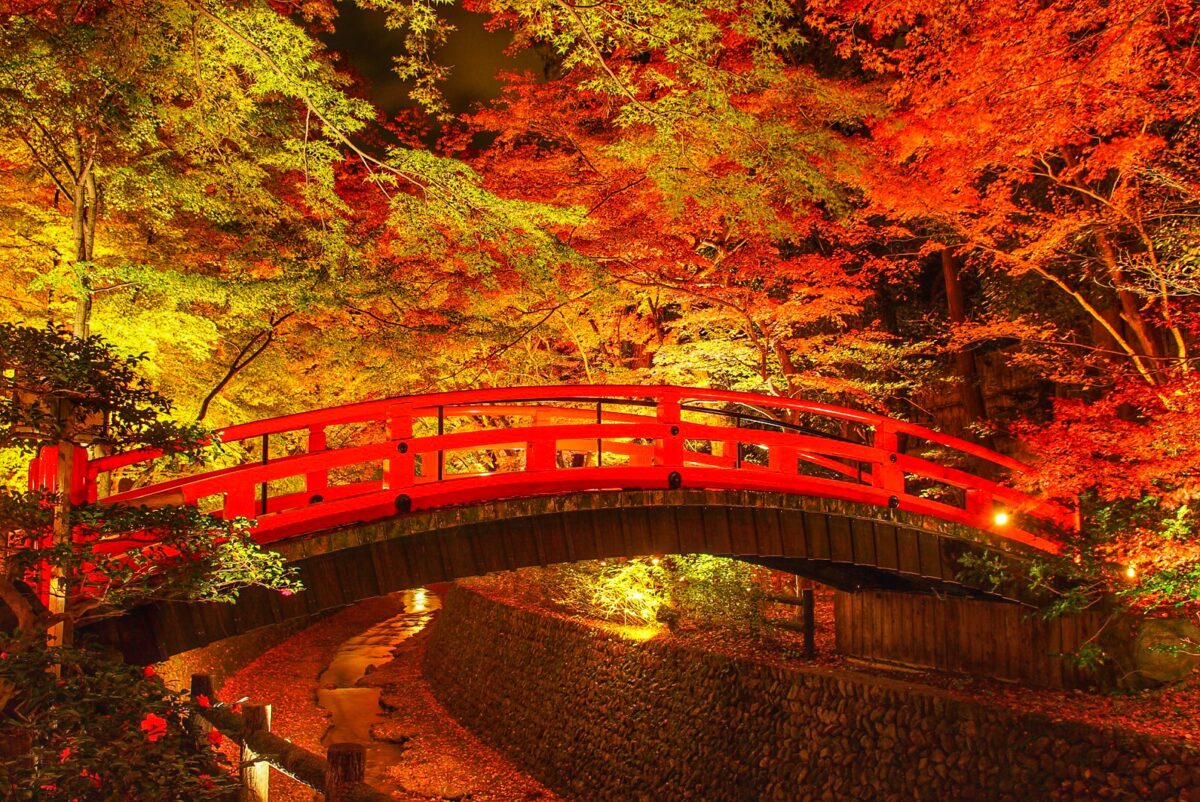
October may be one of the best months to visit Japan as it’s relatively warm, with temperatures of around 72°F (22°C) in Tokyo, and without the humidity of the summer months. The northern half of Honshu sees the leaves changing colors in October, and there are lots of fun things to do including festivals this time of year.

In late November, the fall foliage front reaches the cities of Tokyo, Kyoto and Osaka. Temperatures are pleasant, around 63°F (17°C), and there’s not a lot of rainy days. Except for a few popular foliage viewing spots, travel activity is low in November. Combined, these factors make November another great month to visit Japan.
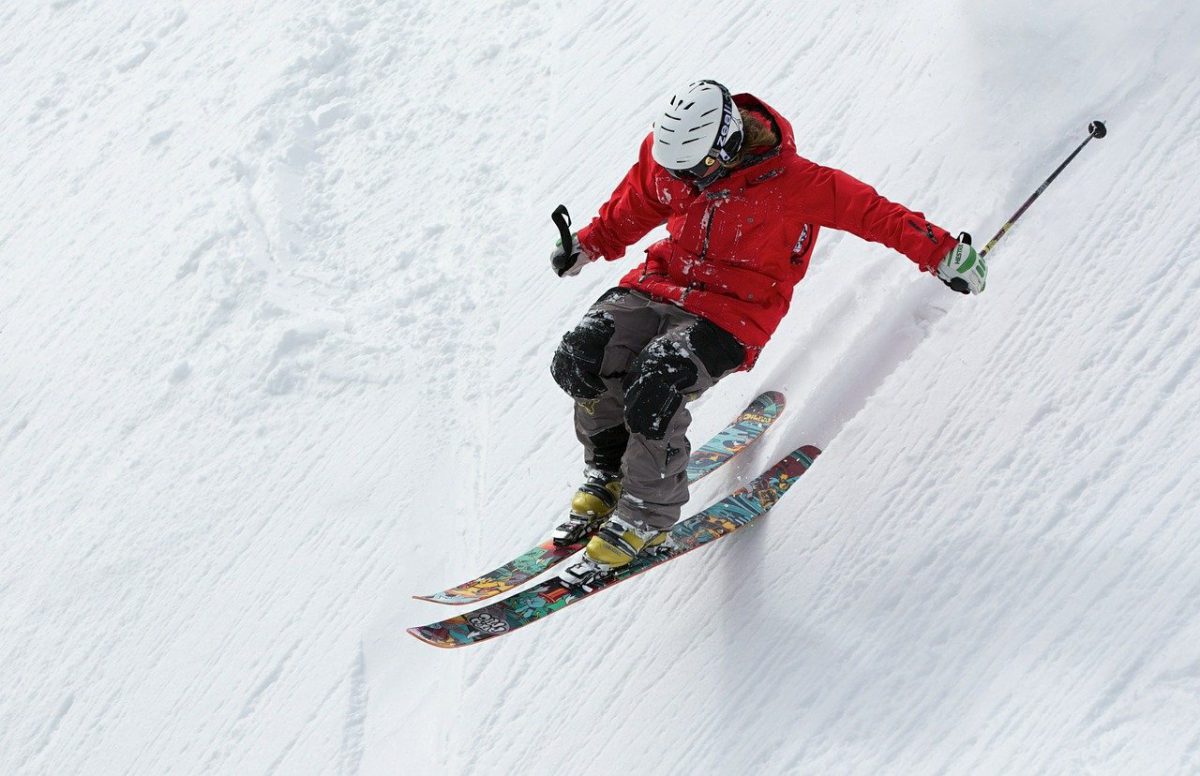
As winter returns to Japan, Hokkaido sees temperatures dip below zero during the night and hover just a few degrees above zero during the day. In Tokyo, Kyoto and Osaka the average daily temperature generally stays around 50°F (10°C). The weather is relatively dry, and December’s travel activity is low up until the end of the month. However, days are quite short as the sun sets around 4:30pm in Tokyo, but the Christmas illuminations make up for the lack of daylight with their glitter and sparkle. And if you like hitting the slopes , December is a great choice as this month marks the beginning of Japan’s skiing season.
Japan Wonder Travel is a travel agency that offers guided tours throughout Japan. From private walking tours to delicious Food and Drink tours, we can help you organize the best tours just for you! If you want to explore Japan and learn more about the history and backstories of each area you are visiting, our knowledgeable and friendly English speaking guides will happily take you to the best spots! In addition, we can provide you with any assistance you may need for your upcoming trip to Japan, so please feel free to contact us if you have any questions or need some help!
▶ Tokyo Tsukiji Fish Market Food and Drink Tour Explore the most lively and popular fish market in Tokyo and try some of the local’s favorite street foods and sake with one of our friendly and knowledgeable English speaking guides!

▶ Tokyo 1–Day Highlights Private Walking Tour (8 Hours) There’s no better way to explore an area than taking a tour with a knowledgeable local guide. You will have the chance to learn about the history and interesting background stories of Tokyo, as well as discover some hidden gems which can be hard to do without a guide.

▶ Mt. Fuji Day Trip Bus Tour from Tokyo Experience the breathtaking views of Mt. Fuji by visiting the highlights of the area on our guided sightseeing bus tour! Departing from Shinjuku in central Tokyo, you can travel comfortably to all of the best spots in the area by bus.

▶ Kyoto Private Full Day Walking Tour On this full-day private tour of Kyoto, you will be able to see the highlights of Kyoto in just one day and at the same time develop a deeper understanding of both the culture of the area and Japan as a whole.

Follow us on Instagram , Facebook , Twitter , and TikTok for more travel inspiration. Or tag us to get featured!
Happy traveling!

- Popular destinations
- Hidden places in Japan
- Tours and workshop
- Food and drink in Japan
- Itinerary in Japan
- Places to visit in Tokyo
- Food and drink in Tokyo
- Seasonal events
- Tours & workshops
- Tokyo This Week
- Day trip from Tokyo
- Itinerary in Tokyo
- Places to visit in Kyoto
- Food and drink in Kyoto
- Itinerary in Kyoto
- Day trip from Kyoto
- Travel tips
- Accommodation
- Cultural tips
- Transportation
- Tokyo Tours
- Kyoto Tours
- Kimono Rental
- Fukushima Tours
- Mount Fuji Tours
- Tour Package
- Travel Concierge Service
- Media Kit(English/日本語)
- Search Please fill out this field.
- Newsletters
- More to Explore
The Best Time to Visit Japan
:max_bytes(150000):strip_icc():format(webp)/greg-rodgers-adventure-ed92646b25f247049e53af6d36f6c15f.jpg)
TripSavvy / Elise Degarmo
Weather changes, typhoon season, and busy festivals should all be taken into account while deciding when to go to Japan. The best time to visit Japan is during early spring when the short-lived cherry blossoms are blooming but before or after the busy stretch of Golden Week holidays.
Although avoiding lousy weather is usually the goal of vacations, consecutive sunny days draw bigger crowds to East Asia. You'll have to share transportation and attractions during high season. Hotels are already a bit pricey in Tokyo, but they skyrocket during some of Japan's busiest festivals.
The Weather in Japan
With an archipelago of close to 7,000 islands spread north to south in the Pacific, the weather in Japan can differ significantly between regions. Tokyo can be near freezing while people enjoy T-shirt weather just a little south.
Most of Japan enjoys four distinct seasons, with snow in the winter. However, Okinawa and the islands in the south stay warm throughout the year. Northern Japan often receives heavy snowfall that melts quickly in spring. Tokyo itself doesn't ordinarily receive much snow. The megalopolis got a dusting in 1962, and then snow made headlines again in 2014 and 2016. In January 2018, a massive snowstorm caused disruptions in Tokyo.
Rainy Season in Japan
Even when no typhoons are spinning nearby to mix things up, Japan is a relatively wet country with ample rainfall and high humidity.
The rainy season in Japan typically hits in the summer months , around the middle of June to the middle of July. In Tokyo, June is a stormy month. Historically, showers slack off just a bit in late July and August then return with force again in September.
Adding to the meteorological madness is the threat of typhoons. Typically, most typhoons cause trouble for Japan between May and October. As you can imagine, a typhoon in the area completely changes everything weather-related—and not usually for the better.
Dry Season in Japan
A better way to call the time of year most travelers visit Japan would be the "drier" or "less rainy" season. Rainy days are a thing throughout the year, so building too tight of a sunshine-based itinerary could lead to disappointment.
Fortunately, Japan has some exciting ways to spend time indoors during rainy afternoons.
The driest months in Japan are typically December, January, and February. November and March are "shoulder" months between the seasons—often an ideal time to visit any country to avoid peak-season prices and groups.
Typhoon Season in Japan
Typhoon season for the Pacific Ocean runs between May and October, although Mother Nature doesn't always go by the Gregorian calendar. Storms can arrive early or drag on later. August and September are usually the peak of typhoons in Japan.
Even if they don't threaten Japan, big typhoons in the area can cause severe delays and congestion for air traffic. Check the Japan Meteorological Agency website for current warnings before you plan to travel. Your ticket may be refundable if your travel insurance covers trip cancellation due to acts of nature.
Key Events & Festivals in Japan
Visiting Japan when big festivals are in progress is a great way to get in on the fun and see locals enjoying themselves. But on the other hand, you'll have to compete with crowds at popular sites and pay higher prices for accommodation. Either make a point to arrive early and enjoy the festival or avoid the area altogether until regular daily life resumes.
- Christmas and New Year: Celebrations for Shogatsu (Japanese New Year) can get busy. From the week before Christmas until a few days into January, malls and public transportation are even more crowded. During the holiday season, the Japanese public gets a rare chance to see the inner grounds of the Imperial Palace. This happens on only two days a year: the Emperor's Birthday (December 23) and on January 2.
- Obon : Temples and shrines get busy in the summer during the three-day Obon festival . Dates for Obon vary, depending upon the place in Japan. Obon, in Tokyo and eastern parts of Japan, is usually observed around July 15. Hachigatsu Bon, an even busier time, is celebrated around August 15. Although Obon, commonly just called Bon, is not an official holiday, many Japanese families take leave to pay homage to ancestors around that time of year.
When to Go to Kyoto
Kyoto is a favorite cultural destination for tourists in Japan . The busy season months here can become very crowded. Spring and fall are the busiest times in Kyoto; October and November are the peak months for tourism. Consider booking your trip to Kyoto in August when rain slacks off a little but crowds haven't surged yet. If cold weather doesn't scare you, January and February are good months to visit Kyoto. You'll certainly want to book accommodation in advance if visiting Kyoto in November.
January is winter across much of the country, although some areas like Okinawa remain semi-tropical year-round. This can be a much quieter time to visit, especially after the rush of the New Years holiday.
Events to check out:
- Seijin no Hi (Coming-of-Age Day) is celebrated on the second Monday of January. This date is considered the collective birthday for all who have turned 20, the country's age of majority, in the past year.
- Shōgatsu is celebrated from January 1 through 3 each year. Many families gather together for meals and other celebrations.
February is generally Japan's coldest month, but if you like to ski, it's among the best times of year to visit. Many times, plum ( ume ) blossoms begin blooming toward the end of the month, signaling that spring is on its way. Temperatures in Tokyo typically average around 45 degrees Fahrenheit, while it can be as cold as 20 degrees up north in Sapporo.
- More than two million visitors head to Yuki Matsuri in Sapporo. This annual snow festival includes an international snow sculpture contest, ice slides, and more.
- February 3 marks the first day of spring on the traditional lunar calendar, and it's also celebrated in Japan as a day in which one must ward off evil. People often visit Buddhist temples and ward off the devil, while welcoming fortunes in.
Japan is extremely enjoyable to visit during the spring . Large crowds of people flock to local parks for picnics, parties, and to enjoy hanami —the deliberate viewing of cherry blossom and plum blossom flowers . Families, couples, and even entire offices get in on the fun. The timing of the blooms depends entirely upon the warming weather. The flowers begin in Okinawa and warmer parts of Japan around mid-March, then move north as the weather gets warmer until early May. Forecasters predict the timing as blooms appear from south to north.
- Tokyo's international anime fair, AnimeJapan, is the world's largest anime festival, held each March.
- By late March, Japan is in a full-blown cherry blossom craze. While it's hard to predict when exactly the season will fall, the last two weeks of March are typically a safe bet.
A tradition all over Japan, Hanami literally means viewing flowers. Picnic under the beautiful flowing trees in any public park during this special season. Usually lasting for only two weeks in March, the sakura (cherry blossom) schedule changes a bit every year, so it’s hard to nail down exactly when to come.
April gets extremely busy in Japan, as cherry blossoms are usually peaking. But why not join in on the fun? The weather is sunny, crisp, and clear. Beware, though: School holidays and Golden Week, at the end of the month, can cause crowds to swell.
- Takayama hosts a famous spring festival each year in mid-April. It includes floats lit with lanterns and a festive lion dance.
- Miyako Odori runs throughout April in Kyoto . This festival showcases geiko dances and music. Buy tickets in advance!
Golden week is the most significant, busiest holiday period of them all in Japan. It's the busiest time to travel in Japan; you'll have fun, but watch out! Golden Week starts up around the end of April and runs into the first week of May. Several consecutive national holidays fall within a seven-day stretch. Many Japanese families tack on a valuable week of vacation away from work, so transportation and accommodation fill up quickly on both ends of the holiday. Public parks will be busy.
- Golden Week officially begins with Showa Day and concludes with Children's Day. However, many families take additional vacation days before and after. The impact of Golden Week stretches to around 10 to 14 days.
- Sanja Matsuri is Tokyo's largest festival, bringing more than 1 million visitors to Asakusa. The highlight is an exciting parade of men and women in traditional dress.
Early June in Japan is quite nice, but tsuyu (rainy season) sets in later in the month. While it doesn't rain all day, the gloomy and wet weather is the norm. Despite this, there are still plenty of things to do in the rain: Hot springs and wooded mountain temples are still quite serene, rain or shine. Additionally, hiking season kicks off as the snow melts in the Alps.
- In June, Osaka is home to a major rice-planting festival that dates back more than 1,700 years. During this celebration, 12 women plant rice seedlings in the paddy at Osaka's Sumiyoshi Shrine.
- Yosakoi Soran Matsuri is an annual folk dance festival held in Sapporo. The event attracts almost 40,000 dancers from all over the country and even more visitors. Dancers perform all over the streets and throughout city parks.
Luckily, the rainy season in Japan is short-lived, and it's typically over by the end of July. The country is hot and humid this month, but abuzz with events and activities. This is a great time for a beach visit to Okinawa.
- Mt. Fuji officially opens to climbers on July 1.
- Gion Matsuri , one of Japan's most popular festivals, is held from July 17 to 24 in Kyoto. Intricate floats are pulled through the streets. This is a busy time to visit, so book well in advance.
August is also hot and humid and can be crowded as many school children, and their families take holidays within the country. Hokkaido is a popular destination in August since the weather is prime for outdoor activities.
- Obon, in mid-August, spans three days of honoring the dead, whose spirits are said to return to the earth during this time. Graves are swept and presented with offerings, while lanterns are floated down the country's rivers.
- Many Japanese cities host dramatic displays of fireworks in August. One of the best shows is the Lake Biwa Fireworks festival, held near Kyoto in early August.
September is still warm, but humidity begins to die down. This is the peak of typhoon season though, so Okinawa, Kyushu, and Shikoku are at risks of periods of extremely hard rain and high winds.
- Kishiwada Danjiri Matsuri is an interesting festival held in Osaka each year. Danjiri (festival floats) are released in the streets.
- Seto is famous for its ceramics and commemorates the craft each year during the second week of September. The eponymous festival features pop-up stalls selling affordable pottery and other handicrafts. Around 500,000 people attend each year.
October is a fantastic month to visit, marked by bright, warm days, with little humidity. Fall foliage peaks in the Japanese Alps during this month.
- Roppongi Art Night is held each year in mid- to late October. Arts venues stay open all night and host large-scale installations and performances throughout this exciting weekend.
- Japan loves celebrating Halloween, and it's worth a visit to Tokyo's Shibuya district on October 31, if you want to see thousands of costumed revelers.
November has beautiful weather, with temperatures beginning to fall at higher elevations and further north in the country. Temperatures in Tokyo range from 45 degrees Fahrenheit to 65 degrees, while Sapporo is as cool as 35 degrees at night.
- The Ohara Festival, held in the southern prefecture of Kagoshima, features a street parade of more than 20,000 dancers.
- The Momiji Festival in Kyoto includes five incredible period-decorated boats that are meant to recreate the atmosphere of Japan's Heian court. Re-enactors play traditional instruments and recite noh and kyogen . (P.S. The best views of the event are from the Togetsu-kyo Bridge.)
If you are planning to visit Japan in December , avoid visiting during the last week of the month and the first week of January. While Christmas is not a celebrated national holiday, many people still take time off working during this period, which books up hotels and makes transportation more difficult. Many businesses close over the period leading up to New Year's Day.
- On December 31, temple bells ring 108 times at midnight as part of Joya-no-kane , an annual purifying ritual.
- Kyoto celebrates the unique Daikon radish during the Sanpoji Daikon Festival. The vegetable becomes available in late Autumn, but the festival takes place in mid-December. More than 10,000 people eat the hot radish, which is believed to have health benefits.
Frequently Asked Questions
In March and April, you may be able to catch the cherry blossom season while enjoying crisp and sunny weather.
Japan's rainy season falls over the summer with June and July being the rainiest months. Late July and August tend to be a bit drier, but it gets rainy again in September.
Typhoon season typically lasts between May and October, reaching its peak in August and September.
Related Articles
More related articles.
Best Time To Visit Japan
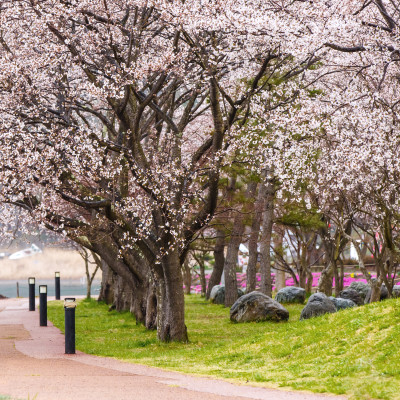
Japan in spring is a sight to behold
Pleasant temperatures and clear blue skies make late spring, which runs from March to May, and late autumn, which is from October to November, the best seasons to visit Japan. Peak season: Spring – March to May – the cherry trees of Japan are in full bloom in late April Autumn: October to November – cool, mild weather with some possibility of typhoons Off-season: Summer – June to August – expect a lot of rain, with hot and humid weather in July and August Winter : December to February – cool and chilly, with snowfall in the mountainous regions and sometimes, also in the cities
Read on to know more about the ideal time to enjoy a luxury private tour of Japan .
Best Time To Visit
We recommend.
- Visit the UNESCO World Heritage site of Shirakawa-go, truly breathtaking in winter
- Enjoy a cup of warm sake and take a dip in an onsen – the perfect antidote for cold evenings
- Experience the Sapporo Snow Festival with ice and snow sculptures galore
- Hit the slopes at one of the many top-class ski resorts in Northern Japan
- Drop by and say hello to the snow monkeys of Nagano
- Attend a cooking class in Kyoto
- Explore electrifying Tokyo in super fast trains
- Picnic under the alluring cover of the cherry blossom trees in Tokyo
- Take part in the Takayama Matsuri, one of the most beautiful festivals in Japan
- Cherry blossom can still be experienced in northern cities like Hakodate and Sapporo
- Delight in the sights and sounds of the Sanja Matsuri, a festival that takes place in Asakusa in Tokyo
- Stay in a hot spring ryokan in Hakone
- Explore hiking trails in Hokkaido
- Visit a Japanese garden, green and alive after the rains
- Hike up Mt. Fuji
- Cool off at one of the beaches of Okinawa Island
- Marvel at the impressive floats of the Kyoto Matsuri festival
- Witness one of the many firework shows or attend a weekend concert in Tokyo
- Escape the heat and head to Hokkaido for some nature therapy
- Witness an exciting Sumo wrestling match at the Ryogoku Kokugikan sumo stadium in Tokyo
- Hike the trails of Nagano
- Enjoy sunny days in Hiroshima
- Visit the Daisetsuzan National Park for Koyo (fall color) viewing
- Sit under a colorful fall canopy in one of Tokyo’s many parks
- View the temples of Kyoto against a backdrop of multi-hued fall leaves – a sight to behold!
- Get into the festive spirit as Tokyo lights up for Christmas
- Get your fix of outdoor adventure as you ski down the mountains in Sapporo
Weather in Japanese Cities
An archipelago stretching over 3,000 km from north to south, Japan experiences major variations in the weather by region. Find out the best time to visit Japan by city.
- Tokyo – is a great year-round destination but the best times to visit the city are from March – May and October – November which coincide with the cherry blossom and fall season.
- Kyoto – is simply spectacular in autumn and equally alluring in spring.
- Hokkaido – is a winter wonderland and best experienced from December to February at one of its many world-class ski resorts.
- Osaka – is best visited in spring and fall.
- Hakone – This tranquil, lakeside town is best experienced during springtime.
- Nagano – The ‘Roof of Japan’ sees the most tourists during the months of March to May.
- Fukuoka – Sitting in the southern part of Japan, the city is best visited from May until October.
- Mt.Fuji – Hike this symbol of Japan during the months of July to mid-September.
- Okinawa Islands – The beaches of Okinawa are at its most beautiful in summer, from June to October.
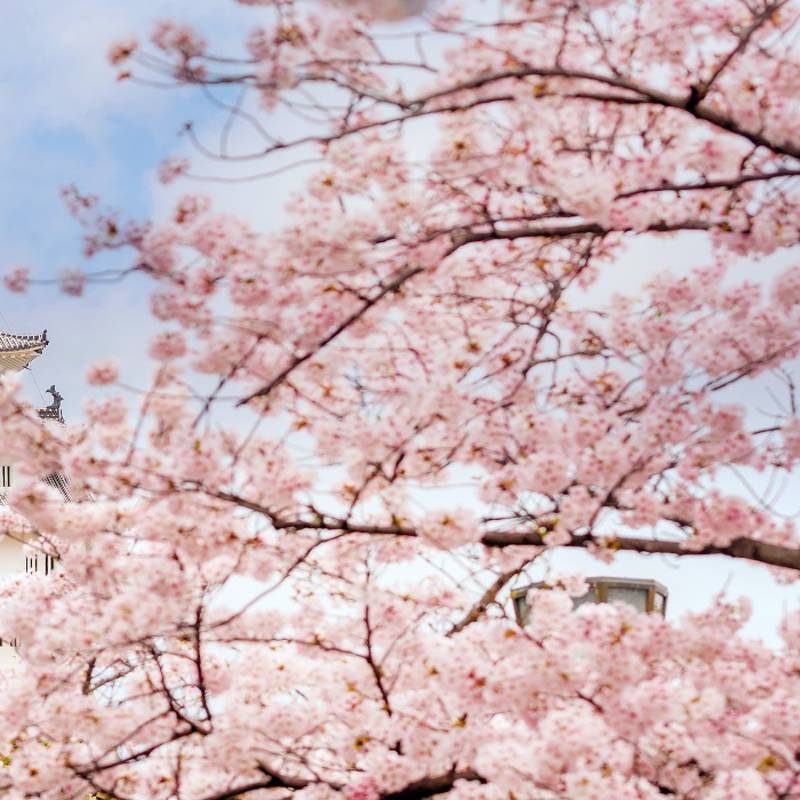
Japan Travel Tips
What is the best time to visit japan for cherry blossoms.
The delicate pinks of the sakura or cherry blossoms are in full bloom and dress up the streets of Tokyo and Kyoto towards the end of March and the first week of April. Expectedly, you will also see huge crowds and if experiencing this stunning sight is on your bucket list, you need to plan your visit six months to a year in advance. But if jostling with the crowds is not quite your style, you could head to Sapporo which sees cherry blossoms in all its ethereal glory only in early May.
After you have admired Japan’s cherry blossoms, we highly recommend extending your journey to experience the fascinating history and culture of the country. Our experts have listed the top 10 things to do in Japan , which can make your trip a truly enchanting one.
When is rainy season and typhoon season in Japan?
Early summer is rainy, but July and August are hot and humid except in Hokkaido, with temperatures in Tokyo reaching up to 88 °F. While autumns are cool, there is a possibility of typhoons, especially in Kyushu and Shikoku Islands, located in the South Western part of Japan, during the months of August and September.
When should I visit Japan to see fall colors?
The months of October to November see a color burst of a different kind with autumn leaves in deep reds, browns, yellows and golds framing the spectacular scenery of the country.
When is winter season in Japan?
Winter in Japan, which can be quite chilly, runs from December to February. Heavy snowfall is, however, mostly limited to the mountainous regions.

What to Pack for Japan
Lighter clothing in the summer is recommended, but jackets are necessary if you plan to explore the Alpine regions. If you are visiting in the spring then bring some warmer clothes as the temperature drops considerably at night. There is plenty of walking involved in any trip to Japan so pack your most comfortable footwear.
As a rule, the Japanese people are always meticulously dressed and you will be judged and sometimes treated based on how you dress. While Japan is less strict than other Asian countries about dress codes when visiting temples, it is always polite to cover shoulders and be dressed conservatively. Easy to slip on/slip off shoes are more practical when visiting temples, or staying in ryokans etc.
How to Dress by Season in Japan
Spring: This is one the best season to visit Japan. If you are visiting Japan in spring, layering is the key as there are considerable variations in temperature from day to night. It is wise to bring a light jacket as temperatures can drop significantly at night.
Summer: The country gets quite hot in summer so it is best to pack light clothes, cottons, breezy linens and garments in breathable fabrics along with sunglasses and hats. It is also when the country gets the most rainfall so don’t forget to pack an umbrella and rain jacket.
Fall: Pack layers. You will need sweaters and light jackets too.
Winter: Fill your suitcase with winter clothing including heavy coats/jackets, gloves, hats and scarves.
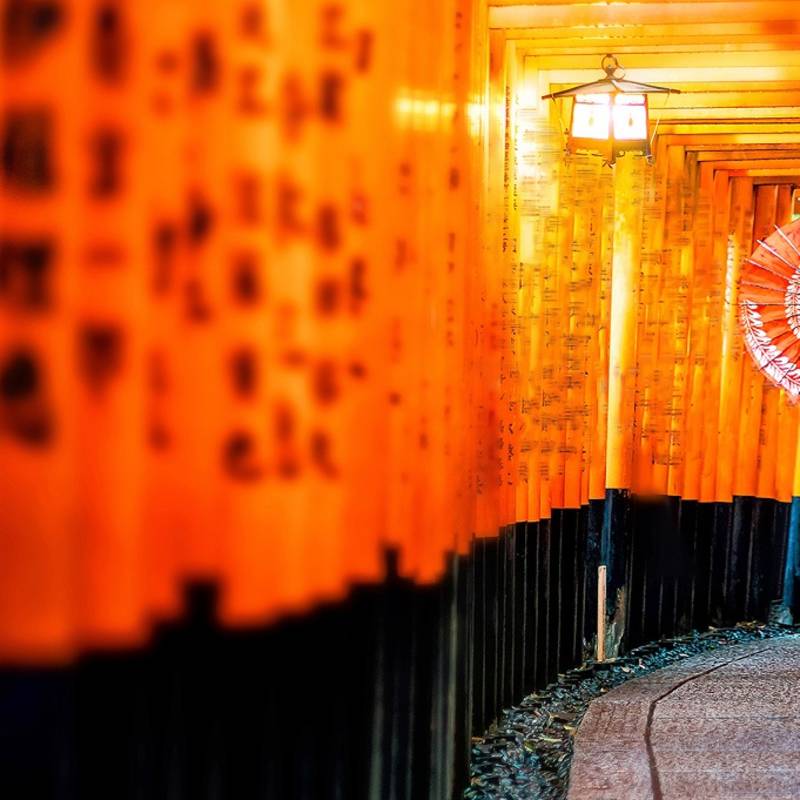
Popular Trips to Japan

Islands of Okinawa and Cuisine of Japan
If you are looking to go beyond the beaten path, this Japan vacation, which blends beaches, nature and cuisine is the ideal one for you Sample ramen and visit an old sake brewery in the lively capital of Tokyo before heading off to explore the diverse landscapes of the Okinawan islands. Savor delicacies such as…

Classic Japan and Seoul
Discover the unique cultures and highlights of Japan and South Korea at their top destinations.
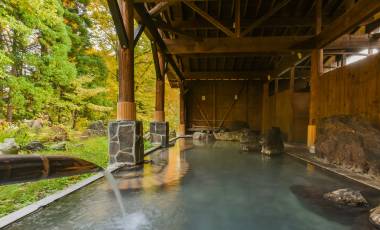
Japan's Onsen Traditions
Get the perfect introduction to Japan’s age-old traditions! Focused on onsen or hot spring bathing rituals, this private tour takes you to the mountain town of Kinosaki, set between Kyoto and Osaka, which is famed for its onsen bathhouses, ryokans (inn) and gorgeous scenery. While staying in a typical ryokan, you can also sample authentic…
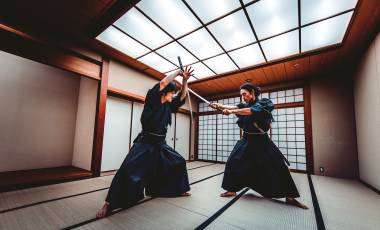
Japan's Samurai History, Culture and Cuisine
Looking for the best Japan luxury tour package? Uncover Japan’s famous Samurai culture, heritage and cuisine as you explore some of its best-loved destinations. Admire the iconic landmarks of Tokyo on a personalized tour, see Sumo wrestlers in action and go on a gourmet food exploration with an expert.
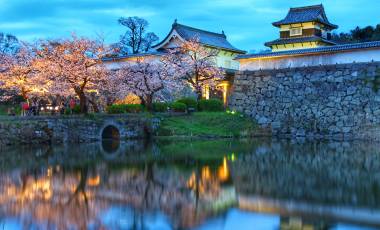
Best of Japan
Discover the diversity of Japan on this comprehensive tour from the north to the south. Explore classic cities such as Tokyo, Kyoto, and Osaka at your own pace on privately guided tours with local experts. Take in sights such as the Meiji Shrine in Tokyo and the magnificent gardens of Kyoto and Okayama. Fuel up…

Luxury Japan: Traditions, Onsens and Mount Fuji
Discover classic cities, traditions and on this luxury Japan vacation – from the megacity of Tokyo to the natural paradise of Hakone, and the cultural capital of Kyoto.
Best Places To Visit
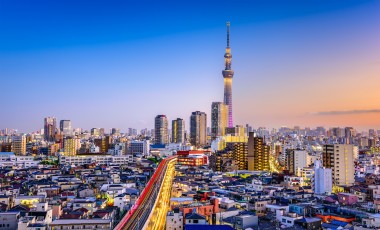
Tokyo is a city like no other! Defined by cutting-edge design, quirky creativity and its own unique ancient culture, the city defines the best of both worlds.
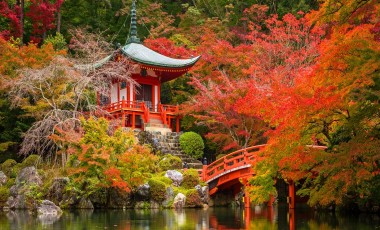
Kyoto is to be seen to be believed. With no less than 17 UNESCO World Heritage sites, the city encapsulates traditional Japanese culture and tradition.
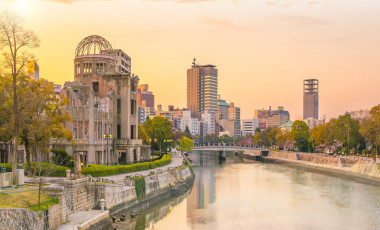
Hiroshima evokes powerful images and emotions attached to its war-torn past. Yet today, Hiroshima has emerged as a symbol of peace, beauty, and hope.
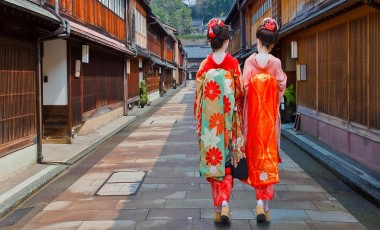
Kanazawa is perhaps best known for its 17th century castle garden Kenroku-en. It is equally well known as the neighbor of the quintessential Japanese feudal fortress, Kanazawa Castle.
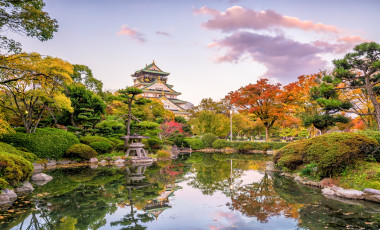
Osaka is third largest city of Japan and has been the home of traders and merchants. It is also well-known for Japan’s oldest temple, the Shinto Sumiyoshi-taisha, and the majestic 16th century Osaka Castle.
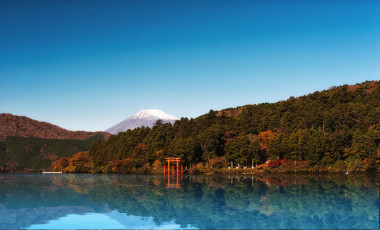
Hakone defines the iconic image of Japan— with the majestic backdrop of Mount Fujiyama as it rises out of coniferous forest covered mountainsides, lakes and hot springs (onsen).
Things To Do
From warm baths in natural hot springs to authentic cooking classes and trips to an enchanted forest – discover the top ten highlights of Japan tours from our Enchanting Travels destination experts.
Travel Guide
Japan boasts lush green spaces, vast open landscapes and charming rural villages. The country is also considered to be one of the safest destinations in the world! Here are the top Japan travel tips from our destination experts.
Traditional yet wildly innovative, the cuisine in Japan is among the best in the world and listed as UNESCO Intangible World Heritage! Eat your way through Japan with the top food tips from our experts.
From the Blog
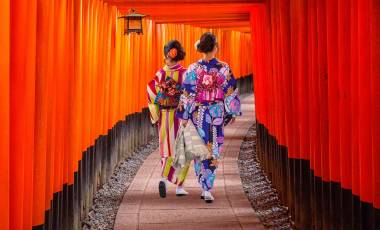
Top 10 Temples in Japan
Deciding on the top temples, shrines and monasteries worth a visit in Japan, a country with many thousands to choose from, is no small task. Discover our top 10 picks, from the most popular Shinto shrines to the best Japanese monasteries and Buddhist temples.
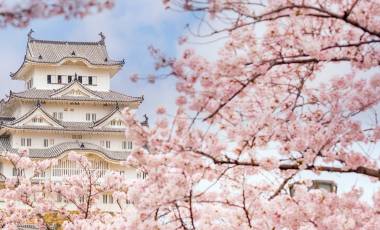
Experience the Magical Cherry Blossom Festival in Japan
Plan your Japan vacation to coincide with the magical cherry blossom festival in Spring for a truly unique experience.
What Our Guests Say

The Enchanting Difference
Authentic & unique.
Our award-winning, licensed local guides provide incredible insights and exclusive experiences for you.
Personalized & Private
Our experts completely customize your private tour to match your interests and preferences.
High-Quality Experiences
All our accommodations and services are personally tested by our team.
Fully Supported Travel
You’ll have a personal and dedicated trip coordinator, backed by 24/7 support in case of emergencies while you’re traveling.
Financial Protection & Flexibility
Your booking is flexible and completely secure with us.
Safe & Secure
Your safety and well-being are our top priorities.
Do you have a vacation in mind? Personalize your itinerary with our Trip Builder.

Best (and Worst) Times to Visit Tokyo: Weather, Experiences, and Travel Tips
Tokyo is the capital city and it perfectly combines modernity and history. You shouldn't miss it when you travel to Japan. Tokyo has a climate with four distinct seasons. Spring is mild to warm, summer is hot and humid, autumn is warm and wet, and winter is cool and drier, sometimes with snow.
The best times to visit Tokyo are in spring (March to May) to enjoy the best scenery of cherry blossoms and in autumn (September to November) to appreciate the charming colorful foliage.
August is the hottest month in Tokyo with an average daily high of about 31°C (88°F). The coldest month is January, with an average daily high of 10°C (50°F).
The "plum rainy season" extends from June to mid-July and brings persistent light rain. Typhoons hit in September and October, when there is the most rainfall but in concentrated storms between drier periods.
- Spring in Tokyo
- Summer in Tokyo
- Autumn in Tokyo
- Winter in Tokyo
- Travel Guide by Month
Weather in Tokyo Every Month
Spring in tokyo (march to may): comfortable weather and cherry blossom.
March to May, especially March and April, is the most popular travel season in Tokyo — and even in the whole of Japan — as you would experience comfortable weather with cherry blossoms blooming nearly everywhere. Temperatures range from 10–19°C (50–67°F) on average in April and there's an average rainfall of about 130 mm (5 in).
Visiting Japan during the Easter vacation could be a good option for your family. It takes about 7–10 days to enjoy the main highlights in Tokyo, Kyoto, and Osaka as well as to take in some unique experiences . These could include enjoying a boat ride to immerse yourself in the beauty of the pink cherry blossoms along the riverside while avoiding the crowds in the park, and taking a family photo while wearing kimonos under the cherry trees.
Wearing a sweater and a light coat is adequate to cope with the weather, but also pack shirts to wear in the daytime when it gets warmer.
Insider tips: Prices during the cherry blossom season are about two or three times higher than usual. Many traditional ryokans and excellent guides are also fully booked in advance, so we highly recommend that you book hotels and flights at least 3-6 months in advance.
Check more details about Plan Your First Trip to Tokyo >>>
Summer in Tokyo (June to August): Hot, Humid
Summer (June to August) is the hottest and most humid time in Tokyo. Temperatures range from 26–30°C (79–86°F) on the average summer day, and the average rainfall is about 160 mm (6 in) per month.
When traveling in Tokyo in summer, the heat is not a big problem to worry about . You could enjoy plenty of indoor activities inside air-conditioned buildings and travel to the attractions in a private air-conditioned car, which is also helpful to minimize the inconvenience of any rainfall.
It does not rain every day (12 days a month on average) and you can travel around easily. Although it is the rainy season, many family groups still visit Japan to celebrate their kids' graduations, anniversaries, birthdays, or just for an annual vacation.
Big fireworks celebrations are popular and lively activities in Tokyo during the summer. Imagine wearing a yukata (summer kimono) and enjoying the colorful fireworks in the cool summer breeze. It is not only a visual feast but also provides you with an opportunity to soak up the traditional cultural atmosphere.
July to early September is the only time you would be allowed climb Mount Fuji. You could enjoy cooler temperatures, fresh air, and sea of clouds there.
It's suitable to wear summer clothes, such as shirts, shorts, sunglasses, and hats. You are recommended to take an umbrella in case of sudden rain.
Insider tips: June is an ideal time for a summer vacation in Japan as a family with teenagers. You could enjoy slightly cooler temperatures, fewer crowds, and cheaper costs.
Are you planning a trip to Tokyo? Check out our 5 Days in Tokyo for more itinerary ideas.
Autumn in Tokyo: Cool Temperatures and Fall Foliage
The cool weather and colorful fall foliage make autumn (September to November) another popular time to visit Tokyo and other areas of Japan. Temperatures during this period have a pleasantly mild average range of 15–22°C (59–72°F).
September and October (the typhoon season) are characterized by a high average rainfall of about 230 mm (9 in) per month, while November tends to be much drier with a moderate average rainfall of 96 mm (4 in).
You could appreciate the fall foliage almost everywhere in November, take a leisurely stroll or enjoy a cup of steaming tea in a tranquil Japanese courtyard teahouse to admire the colorful foliage and enrich your experience in Japan.
The weather changes frequently in Tokyo in fall, but making sure that you have a shirt, a mid-layer, and a rain coat should be enough to cope with it. If you travel during the typhoon season, don't forget to take an umbrella.
Winter in Tokyo (December to February): Cold but Good for an Onsen Experience
Winter (December to February) is the coldest time in Tokyo but it's not too cold for traveling, with an average high temperature of about 11°C (52°F). It's the driest time of the year, with an average rain/snowfall of about 56 mm (2 in).
Hakone , located about 2 hours away via Japan Railways (JR) from Tokyo, is the best place to relax in a traditional Japanese-style ryokan with an onsen (hot spring bath), where you could enjoy the stunning snowy trees and mountains surrounding you.
To enjoy some winter fun, you could take a JR train to Nagano, which would take about 1½ hours. There, you could witness the unique sight of snow monkeys soaking in warm hot springs to keep themselves warm.
Celebrating Christmas and New Year in Tokyo would allow you to see the dazzling Christmas lights, pray for good luck in the coming year at a shrine, and watch the big fireworks to welcome the New Year. It one of the busiest times to travel, so we recommend that you book flights and hotels at least 3-6 months in advance.
You'd better wear thick clothes to keep warm in Tokyo in winter. We recommend that you take a down jacket, gloves, and waterproof boots.
Contact us if you are thinking about a trip to Japan. Our professional travel advisors are ready to create a wonderful trip based on your needs and interests, whatever the weather.
Tokyo Travel Guide by Month
Click the sign of each month to check the travel guide information.
Tokyo Weather in January
- Average high: 10°C (50°F)
- Average low: 2°C (36°F)
January is the coldest month and it's a dry time for Tokyo, with light and infrequent snow or rain. The cold weather also brings the benefits of the lowest prices and the fewest crowds after the New Year holiday.
Tokyo festivals and events in January: New Year is a popular time to travel to Tokyo and you could pray for good luck in the coming year at a shrine.
Suggested reading: How to Plan a Japan Winter Trip >>>
Tokyo Weather in February
- Average high: 11°C (52°F)
Tokyo in February remains cold and relatively dry, but it's not too cold to travel. This makes it a good choice for those who want to avoid high prices and large crowds.
Tokyo Weather in March
- Average high: 14°C (57°F)
- Average low: 4°C (39°F)
The weather starts to get warmer in March in Tokyo, but it still gets cold in the early mornings and evenings.
March sees the start of the cherry blossom season, although most of March in Tokyo is uncrowded. When the cherry blossom comes into full bloom in late March, it tends to get very crowded.
Tokyo Weather in April
- Average high: 19°C (66°F)
- Average low: 9°C (48°F)
April is a pleasant time to travel to Tokyo, with mild temperatures. The average rainfall increases to about 134 mm (5 in), but it wouldn't significantly affect your trip plans as there is only moderate rainfall.
Tokyo festivals and events in April: The cherry blossoms usually reach full bloom in early April, during time which prices can double and crowds tend to be large.
Tokyo Weather in May
- Average high: 23°C (73°F)
- Average low: 14°C (57°F)
May sees the end of spring blossom season and the rain situation is similar to April's, but there is warmer weather. You could explore the highlights and do some outdoor activities in comfortable weather.
Tokyo Weather in June
- Average high: 26°C (79°F)
- Average low: 18°C (64°F)
June is the beginning of summer and the "plum rain season". It does not rain every day. Sometimes there may be steady light rain, but it would not affect your journey.
June is an ideal time to travel to Tokyo for many families with teenagers as the weather is significantly cooler than the following summer vacation months (July and August), there are fewer crowds, and the cost is cheaper.
Suggested reading: How to Plan a Japan Summer Trip >>>
Tokyo Weather in July
- Average high: 30°C (86°F)
- Average low: 22°C (72°F)
The plum rainy season continues in July and the weather is hot and humid. But there is no need to worry as Tokyo offers plenty of authentic cultural activities that you could enjoy indoors.
Tokyo festivals and events in July: In July, Tokyo hosts many big fireworks celebrations, when you could immerse yourself in the local cultural atmosphere by wearing traditional Japanese clothing.
Tokyo Weather in August
- Average high: 32°C (90°F)
- Average low: 24°C (75°F)
The heat is not a big problem in August, because you could enjoy plenty of indoor activities inside air-conditioned buildings and travel to the attractions in a private air-conditioned car.
Tokyo festivals and events in August: The Obon Festival is the most important festival in summer in Japan, aimed at worshipping ancestors. A grand celebration takes place in Tokyo during this time and you could observe or participate to experience the cultural atmosphere.
Tokyo Weather in September
- Average high: 28°C (82°F)
- Average low: 20°C (68°F)
Typhoons hit Tokyo in September and you might experience heavy rainfall for a period of a day or two. If you are travelling in September, keep your itinerary flexible in case of flight delays or cancellations.
Tokyo Weather in October
- Average low: 15°C (59°F)
The weather becomes cooler and more pleasant in Tokyo in October. In late October, the leaves turn yellow or red, creating Japan's attractive autumn scenery.
Tokyo Weather in November
- Average high: 17°C (63°F)
November is the best time to travel to Tokyo to enjoy the comfortable weather and appreciate the beautiful scenery of colorful fall foliage.
It's one of the peak seasons in Japan so we recommend that you make reservations at least 3-6 months in advance if you want to have your choice of hotel and the best guides.
Tokyo Weather in December
- Average high: 12°C (54°F)
December is cold and much drier in Tokyo . You could experience classically-Japanese and seasonally-unique activities during this time. Stay in a traditional Japanese ryokan with an onsen to enjoy snow scenery in Hakone and watch snow monkeys soak in the hot springs to keep warm in Nagano.
More Articles for Planning a Trip to Tokyo
- The Best Areas to Stay in Tokyo
- The Top 6 Day Trips from Tokyo
- How to Plan a Trip to Tokyo
Get Inspired with Some Popular Itineraries
At Asia Highlights, we create your kind of journey — your dates, your destinations, at your pace. You can have any trip tailor made for your travel.
More Travel Ideas and Inspiration
Sign up to our newsletter.
Be the first to receive exciting updates, exclusive promotions, and valuable travel tips from our team of experts.
Why Asia Highlights
Where can we take you today.
- Middle East
- African Safari
- Travel Agents
- Loyalty Program
- Privacy Policy
Address: Building 6, Chuangyi Business Park, 70 Qilidian Road, Guilin, Guangxi, 541004, China
- Media & Industry
- Meetings & Events
- Select Language 简体中文 繁體中文(香港) 繁體中文(臺灣) India (English) Bahasa Indonesia 한국어 ภาษาไทย Tiếng Việt Singapore (English) Philippines (English) Malaysia (English) Australia/New Zealand (English) Français Deutsch Italiano Español United Kingdom (English) Nordic countries(English) Canada (English) Canada (Français) United States (English) Mexico (español) Português العربية Japan(日本語) Global (English)
- India (English)
- Bahasa Indonesia
- Singapore (English)
- Philippines (English)
- Malaysia (English)
- Australia/New Zealand (English)
- United Kingdom (English)
- Nordic countries(English)
- Canada (English)
- Canada (Français)
- United States (English)
- Mexico (español)
- Global (English)
- Fujiyoshida
- Shimonoseki
- Ishigaki Island
- Miyako Island
- Kerama Island
- Tokyo Island
- Koka & Shigaraki
- Hida Takayama
- Ginza, Nihonbashi
- Beppu & Yufuin (Onsen)
- Ginzan Onsen
- Nagasaki Islands

- Kumano Kodo
- Shikoku Karst
- Amami Oshima
- Hachimantai
- Omihachiman
- Aizuwakamatsu

- Diving in Japan
- Skiing in Japan
- Seasonal Flowers in Japan
- Sustainable Outdoors
- Off the Beaten Track in Japan
- Scenic Spots
- World Heritage
- Home Stays & Farm Stays

- Japanese Gardens
- Japanese Crafts
- Temple Stays
- Heritage Stays
- Festivals and Events
- Theater in Japan
- Japanese Tea Ceremony
- Cultural Experiences in Japan
- Culture in Japan

- Local Cuisine Eastern Japan
- Local Cuisine Western Japan
- Local Street Food
- Japan's Local Ekiben
- Japanese Whisky
- Vegetarian and Vegan Guide
- Sushi in Japan Guide
- Japanese Sake Breweries

- Art Museums
- Architecture
- Performing Arts
- Art Festivals
- Japanese Anime and Comics
- Japanese Ceramics
- Local Crafts

- Scenic Night Views
- Natural Wonders
- Theme Parks
- Samurai & Ninja
- Iconic Architecture

- Wellness Travel in Japan
- Japanese Ryokan Guide
- A Guide to Stargazing in Japan
- Relaxation in Japan
- Forest Bathing (Shinrin-yoku)

- Experiences in Japan
- Enjoy my Japan
- National Parks
- Japan's Local Treasures
- Japan Heritage
- Snow Like No Other
- Wonder Around Japan

- Visa Information
- Getting to Japan
- Airport Access
- COVID-19: Practical Information for Traveling to Japan
- Anime Tourism
- Countryside Stays
- Accessible Tourism
- Hokkaido Great Outdoors
- Scenic World Heritage in Tohoku
- Shikoku’s Nature and Traditions
- Southern Kyushu by Rail

- Traveling by Rail
- How to Travel by Train and Bus
- JR Rail Passes
- Scenic Railways
- Renting a Car
- Sustainable Travel in Japan
- Travel Brochures
- Useful Apps
- Online Reservation Sites
- Eco-friendly Accommodation
- Luxury Accommodations
- Traveling With a Disability
- Hands-free Travel
- How to Book a Certified Tour Guide
- Volunteer Guides
- Tourist Information Center

- Japanese Manners
- Spring in Japan
- Summer in Japan
- Autumn in Japan
- Winter in Japan
- Cherry Blossom Forecast
- Autumn Leaves Forecast

- Japan Visitor Hotline
- Travel Insurance in Japan
- Japan Safe Travel Information
- Accessibility in Japan
- Vegetarian Guide
- Muslim Travelers
- Safety Tips

- JAPAN Monthly Web Magazine
- Arts & Cultures
- Nature & Outdoor
- Festivals & Events
- Insider Blog
- Things to do
- Local Guides
- Food & drink
- Traditional
- Hokuriku Shinetsu

My Favorites
${v.desc | trunc(25)}
Planning a Trip to Japan?
Share your travel photos with us by hashtagging your images with #visitjapanjp

Weather & Geography
- Helping You Plan
- Weather & Geography
Find out the weather forecast and get up-to-date information on the seasons and Japan's geography
Weather forecast.
Many islands are uninhabited and nature is beginning to take some of them back in dramatic fashion—visit Tomogashima Island and its abandoned and now overgrown red-brick military buildings.
Weather through the seasons
Every season in Japan has its charms, brought by the seasonal changes in temperature and weather. Read below to learn what distinguishes each season from the rest in Japan.
A welcome break from the winter cold, spring is celebrated throughout the country with the arrival of the cherry blossoms. Starting in the south and gradually moving north, the blossoms bloom between March and May depending on your location. Cool and breezy with generally sunny skies, spring is a comfortable time to get out and explore the cities and countryside. Leading into summer, the rainy season begins in May to June.
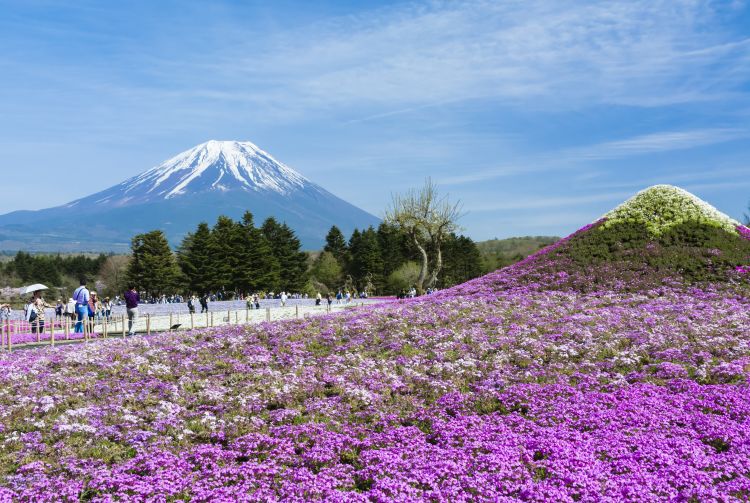
Summer throughout Japan is stiflingly hot and intensely humid—make sure to keep hydrated. The beaches are packed, firework displays explode above the nation's rivers, and street festivals are held around every corner. The mountains offer some respite from the major city cauldrons. Be aware that August and September may bring typhoons that can thwart your travel plans.
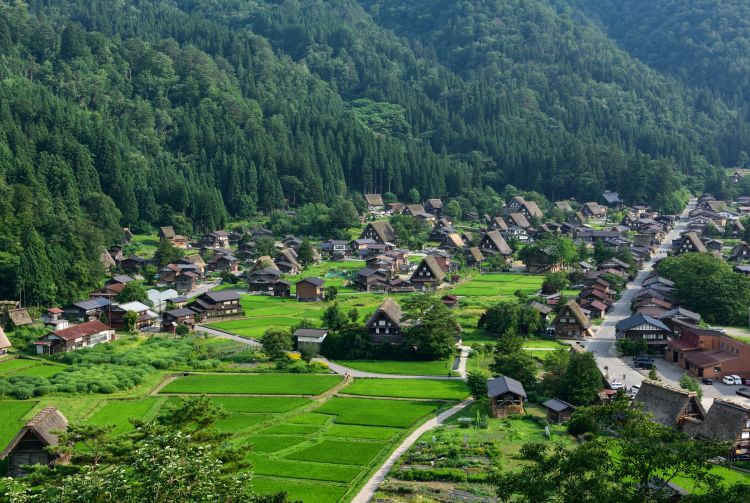
As the weather cools, the autumn colors light-up the countryside. Starting in the northern island of Hokkaido and traveling south, the dazzling autumn leaves blanket the country between late September and early December. Similar to spring, the fall season is perfect for outdoor exploration and a great time to taste what's in Japan's larder.

The ski season begins and the northern areas are covered with Japan's peerless powder snow. The weather varies from region to region, but winter brings many sunny days and beautiful blue skies. Warm up with some hot sake and a bowl of bubbling hot-pot.
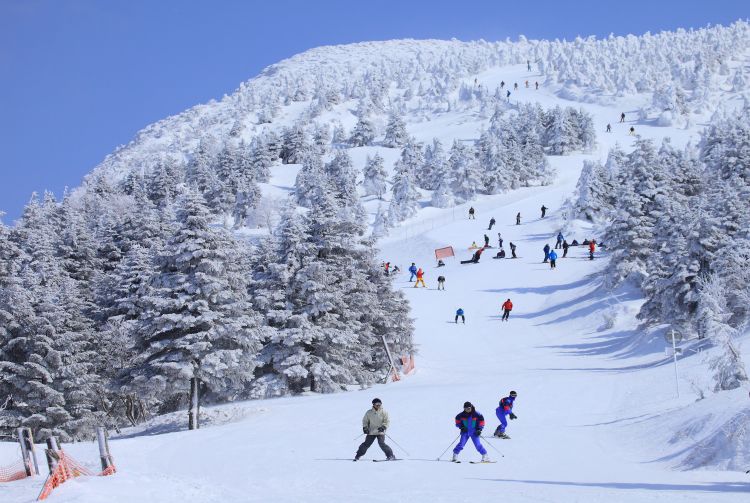
Average temperatures and precipitation

Earthquakes and Volcanos
In addition, Japan is located on the fault lines of four tectonic plates, making earthquakes a common occurrence. There have been several devastating earthquakes in the last 100 years, including the Great East Japan Earthquake on March 11, 2011. Small earthquakes happen on a daily basis somewhere in Japan, and many of them are barely noticeable. However, before your trip, familiarize yourself with earthquake preparedness and make sure to locate the designated evacuation area for the buildings where you stay.
Heat Illness Prevention Information
Did this information help you.
out of found this information helpful.
Thank you for your feedback.
Recommended for you.
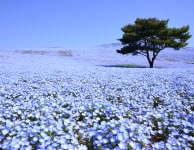
Please Choose Your Language
Browse the JNTO site in one of multiple languages

Weather and climate in Japan

The climate in detail
The seasons.
- Hokkaido - Sapporo
- Honshu - Niigata, Sendai, Tokyo, Kyoto, Osaka, Mountains
- Kyushu - Fukuoka, Nagasaki, Kagoshima
- Shikoku - Takamatsu, Kochi
- Other islands - Okinawa
What to pack

Other islands
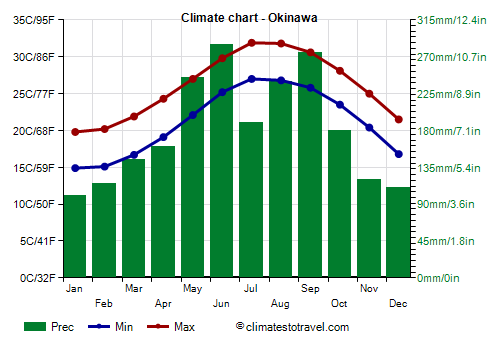

IMAGES
VIDEO
COMMENTS
New Year is one of Japan's three major travel seasons with intensive domestic and international travel activity. Many shops, restaurants and attractions are closed for at least one day between December 29 and January 4. Read more about visiting Japan during New Year.. The remainder of January is a good time for visiting Japan, as the weather is usually sunny and dry and sightseeing spots are ...
June to August is the worst time to visit Japan. It is summer and very hot, with average high temperatures around 31°C (88°F) and feels-like temperatures reaching 41°C (106°F). Traveling between attractions, or even just stepping out of the hotel to shop, can feel like being scorched by the sun.
Get the latest on Japan's weather forecast, geography, seasonal information and average yearly temperatures throughout the country. ... Planning a Trip to Japan? Share your travel photos with us by hashtagging your images with #visitjapanjp. 28 Sep 29 Sep 30 Sep 1 Oct 2 Oct 3 Oct 4 Oct.
When to go to Japan. is spring (March & April) or autumn (October & November), when days are sunny and dry. During the summer months (May to September), the cities are hot and humid, with heavy rainfall occurring across the country in June & July, except for Hokkaido. In winter, days are cool and crisp, with heavy snowfall in Hokkaido and the ...
Although a tad cooler, the fall month of November is a fantastic time of year to travel to Japan. Temperatures are still comfortable in most of the country, with the added bonus of less rainfall than during the peak summer season. April is an excellent alternative, too, thanks to falling at the tail-end of Japan's cherry blossom (sakura ...
September to November is best for hiking through fall foliage. In September, days are still warm - hot even - but less humid. Though the odd typhoon rolls through at this time of year, major cities are well-equipped to deal with bad weather, and this is generally a great time to travel in Japan.
July is slightly warmer than June, with daily mean temperatures around 23-25 ºC (72-74 F) in central Japan. Sapporo has daily mean temperatures around 20 ºC (68 F). July is hot in Japan, but August is even warmer with daily mean temperatures around 26-28 ºC (79-82 F) in the central part of Japan.
The vibrancy of the country in spring, coupled with the cool weather, makes it one of the most popular times to visit Japan. This peaks during Golden Week, which lasts from late April to early May, where increased domestic traveling may add to the bustle of Japan. Temperatures are a cool 21°C on average so light jackets will be comfortable.
Winter is the best time to visit Japan for an all-purpose trip. Zuleta of Boutique Japan recommends going after the New Year's rush: "From around January 15 to March 15, you can almost feel as ...
68°F. 15°C. 20°C. Average Temperatures in February. Weather: February is pretty much like the month of January. Temperatures increase by two or three degrees, but there's no vast difference compared to January. It is the perfect month for winter sports, as this is the peak season in the Japanese Alps ski resorts.
If you aren't hitting the ski slopes, March to May and September to November are generally considered the best times to visit Japan for pleasant weather. That's when travelers can find the iconic ...
Visiting Japan in March. The weather starts to get milder in March and blossom on the plum trees marks the beginning of spring. Toward the end of March the cherry blossom begins to emerge in the south of the country, which is celebrated by the Japanese with picnics in local parks. As this season is a popular time to visit Japan, the country gets very busy toward the end of the month.
However, our favorite time to visit Japan, without a doubt, was traveling in the fall: early November, specifically. November has a smaller chance of rain than October, and more comfortable temperatures than December. The temperatures have cooled off from the crazy summer humidity, yet it aren't be too cold for hiking.
Tokyo: Average temperatures for summer see lows of 19°C (66°F), going up to 31°C (88°F) by the end of August. Kyoto: Lows of 19°C (66°F) and highs of 33°C (91°F) in August. Sapporo: Lows are around 13°C (55°F) while the highest temperatures peak at a pleasant 26°C (79°F). Warmer temperatures are common in the south.
The lovely spring weather continues into May, with comfortable temperatures of just under 70°F (20°C) on average on mainland Japan. Golden Week, a week of national holidays, falls in the last days of April and the first days of May. As it's one of Japan's busiest travel periods, accommodation will be harder to come by and travel expenses ...
Central and Eastern Japan in April (Tokyo, Kyoto, Osaka) In these regions, April is typically mild and pleasant. Average temperatures range from about 10°C (50°F) to 20°C (68°F), with warmer days becoming more common as the month progresses. This is ideal weather for outdoor activities, including cherry blossom viewing.
Spring and fall are the busiest times in Kyoto; October and November are the peak months for tourism. Consider booking your trip to Kyoto in August when rain slacks off a little but crowds haven't surged yet. If cold weather doesn't scare you, January and February are good months to visit Kyoto.
Autumn weather in Japan Autumn brings variable weather, requiring both summer attire and jackets. By October, cities like Sapporo and Sendai become chilly, with lows around 7-11°C (45-52°F), while Tokyo maintains a warmer climate, with highs around 22°C (72°F). Beware of typhoons, especially in September, which can disrupt travel and daily ...
An archipelago stretching over 3,000 km from north to south, Japan experiences major variations in the weather by region. Find out the best time to visit Japan by city. Tokyo - is a great year-round destination but the best times to visit the city are from March - May and October - November which coincide with the cherry blossom and fall ...
March to May, especially March and April, is the most popular travel season in Tokyo — and even in the whole of Japan — as you would experience comfortable weather with cherry blossoms blooming nearly everywhere. Temperatures range from 10-19°C (50-67°F) on average in April and there's an average rainfall of about 130 mm (5 in).
Summer. Summer throughout Japan is stiflingly hot and intensely humid—make sure to keep hydrated. The beaches are packed, firework displays explode above the nation's rivers, and street festivals are held around every corner. The mountains offer some respite from the major city cauldrons. Be aware that August and September may bring typhoons ...
The best time to visit Japan is spring, from mid-April to mid-May in Tokyo and in the main cities of south-central, a month later in Hokkaido. Or you can go a couple of weeks earlier, although the weather is cooler, to admire the cherry blossoming (hanami). In Tokyo and Osaka, the full bloom occurs around March 30th, in Sendai around April 15th ...
To make sure you're well-prepared for your trip to Japan, let's dive into this week's weather forecast for Tokyo, Kyoto, Osaka, and other parts of Japan. We'll provide a variety of tips to help you pack wisely for the season and plan your itinerary. (Forecast information displayed is as of 5 AM JST on September 16, 2024.)